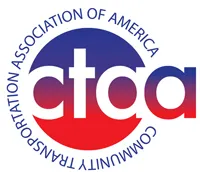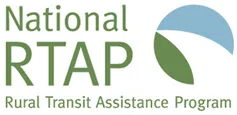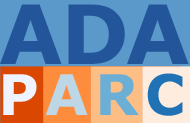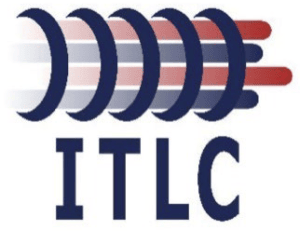Digital Accessibility Courses
Self-Directed Digital Accessibility Courses Now Available
The AT3 Center has partnered with Oklahoma ABLE Tech to provide self-paced courses related to digital accessibility. These courses are FREE for you to take. Learn more below about the courses, how to register and earn certificates.
Notice for anyone who took courses prior to September 1, 2023.
For the past year, The AT3 Center has partnered with Oklahoma ABLE Tech to provide self-paced courses on digital accessibility. These have been hosted in a course catalog specifically for The AT3 Center. However, Oklahoma ABLE Tech is also releasing versions of these courses in its own catalog. As a team, we’ve come together to determine that consolidating efforts into one catalog will allow Oklahoma ABLE Tech to release courses faster and thus get information to who needs it sooner.

Available Courses
Introduction to Digital Accessibility Track, with It Depends: Different Issues, Different Solutions
A short, approximately 15-minute primer on Disability, Accessibility, Assistive Technology, and Digital Accessibility.
Accessible Webpage Design & Content Authoring
Learn the fundamentals of designing accessible web content. This course is designed for those new to accessible digital design but contains information for novices and veterans alike. This course may take two to four hours and is self-paced so that you can start, stop, and resume the course at any time.
Upon completion, learners will have a practical, fundamental understanding of the following:
- Webpage Structure, including titles, language, heading structure, and keyboard navigation
- Images, including text alternatives, complex images, images of text, and decorative images
- Color, including contrast and “color alone”
- Text, including hyperlinks, readability, plain language, and lists
- Accessible Data Tables
Accessibility in Microsoft PowerPoint for Windows
This beginner-level course will guide learners through selecting and modifying an MS PowerPoint for Windows template to be more accessible. The learner will begin by learning how to set up their template and PowerPoint to make their slides more accessible. Then, the learner will go through an exercise meant to simulate the process that an accessibility professional would use to create an accessible slide deck or remediate a slide deck that isn’t accessible.
The course will take about one hour to complete.
A completion certificate will be available to print or save upon successful completion of the course.
Accessibility in Microsoft PowerPoint for Mac
This beginner-level course will guide learners through selecting and modifying an MS PowerPoint for Mac template to be more accessible. The learner will begin by learning how to set up their template and PowerPoint to make their slides more accessible. Then, the learner will go through an exercise meant to simulate the process that an accessibility professional would use to create an accessible slide deck or remediate a slide deck that isn’t accessible.
The course will take about one hour to complete.
A completion certificate will be available to print or save upon successful completion of the course.
Describing Complex Images
Are you wondering how to properly describe complicated images such as maps, graphs and charts, and infographics so many types of users can understand them? This intermediate-level course will not only explain why, but also show you how to go beyond basic alt text when describing complex images.
This course should take approximately 1 hour to complete.
Upon completion, learners will have a deeper understanding of the following:
- How to evaluate images to determine what type of image they are
- How to evaluate the context of images and surrounding content
- Why text alternatives are important for all users, including people with disabilities
- Techniques for how to provide text alternatives in a meaningful way
Once you complete this course, you will be awarded a certificate of completion that you can print out and proudly display!
Getting Started
Enroll in a Course
View this video tutorial on enrolling or follow the instructions below:
- To register for a course, please go the Oklahoma ABLE Tech Canvas Catalog (https://okabletech.catalog.instructure.com/)
- Click on the course you’d like to enroll in
- Click Enroll
- Enter your account information
- Click Register New Account
- Click Enroll
- Find the email titled “Welcome to the Catalog” (make sure to check your Junk/Spam folder)
- Click the Confirm Registration button
- Create a Canvas password and click Submit
- Once you’ve done this, click Catalog Login underneath “Public Login”
- Now, you’re ready to go! Click on Go to Course and begin your learning.
Note: You may see some language about Oklahoma State Outreach or Oklahoma State University logos. We’ve partnered with Oklahoma ABLE Tech at Oklahoma State University, and the courses are housed in their Canvas system. We promise you’re in the right place!
Questions or Issues?
If you have any issues with the courses, please email abt.courses@okstate.edu for assistance.
Information and Communication Technology (ICT) Accessibility Resources
Page Contents
Below are links to resources on ICT accessibility that address many different aspects of the topic. Each has a brief description that captures some of the highlights that you will find in the website that the link points to.
The fact that one resource is linked and another is not does not mean that AT3 endorses any of the products or information below.
Accessibility in Procurement and Use
One of the biggest places that organizations can make quick improvements is in procurement and use decision making. Accessibility should always be one of the considerations that goes into these decisions.
Accessibility Testing and Assessment
Testing your websites for accessibility is incredibly important. The tools listed below can help you test your web content for accessibility. In addition, the Colour Contrast Analyser can be used on non-web content.
Accessible Social Media
Computer and Mobile Device Access
Information and Communication Technology (ICT) Accessibility Community of Practice
If you would like a more comprehensive list of ICT Community of Practice resources, please visit the ICT CoP Resources page.
New Self-directed Digital Accessibility Courses are now available.
Archived Webinar Materials
2023/2024
ICT Community of Practice, February 15, 2024 (video)
ICT Community of Practice Meeting, November 16, 2023 (video)
2021
ICT Accessibility in Technology Purchase and Use Decisions (Video)
Manual Accessibility Testing (Video)
Automated Accessibility Testing (Video)
Accessibility for Web Content Authors(Video)
2020
Accessible PDF Forms (Video)
Accessible Lists and Tables in PDF (Video)
Remediating an Inaccessible PDF (Video)
Introduction to Accessibility in PDF (Video)
Accessibility in PowerPoint (Video)
2019
Basic Web Accessibility Testing on the Cheap (Video)
AT3 Intro to Accessibility (Video)
ICT Accessibility Activities and Reporting (Audio)
Transcript (PDF)
AT Guidance
The U.S. Department of Education’s Office of Educational Technology and the Office of Special Education Programs released a comprehensive guidance package designed to increase understanding of the Individuals with Disabilities Education Act’s (IDEA’s) assistive technology (AT) requirements, dispel common misconceptions regarding AT, and provide examples of the use of AT devices and services for children with disabilities, as well as to highlight the different AT requirements under Part C and Part B of IDEA.
This package includes two parts:
- A joint Dear Colleague Letter from Glenna Wright-Gallo, Assistant Secretary of the Office of Special Education and Rehabilitative Services, and Roberto J. Rodríguez, Assistant Secretary of the Office of Planning, Evaluation, and Policy Development announcing the release of the guidance package, and
- A guidance document dispelling common misconceptions regarding AT titled, Myths and Facts Surrounding Assistive Technology Devices and Services.
The Department is also releasing the 2024 National Education Technology Plan (NETP) today. This flagship policy document provides actionable recommendations to address digital use, design, and access divides in education. In this document, you will see examples of early educators, school districts, and states creating more inclusive and accessible learning environments for all learners, including those with disabilities. The NETP also provides links to resources, such as the accessibility training modules developed by OSEP’s Accessible Educational Materials (AEM) Center.

Education Peer Action Learning
ATAP is offering Assistive Technology (AT) Act Programs a new Education Peer Action Learning (PAL) 2024 Cohort providing an in-depth learning opportunity to advance their knowledge base and skills to establish a collaboration/partnership with their respective State Education Agency (SEA).
Given statutory language encouraging partnerships between AT Act Programs and SEAs, new AT guidance expected to be released by the U.S. Department of Education in December of 2023, and widespread interest from national stakeholders in facilitating/fostering additional partnerships between AT Act Programs and SEAs, the time is ripe for such a technical assistance opportunity.
The Association of Assistive Technology Act Program’s AT3 Center selected Education as the first environment in a series of Peer Action Learning (PAL) events to promote enhanced capacity for AT Act Programs.
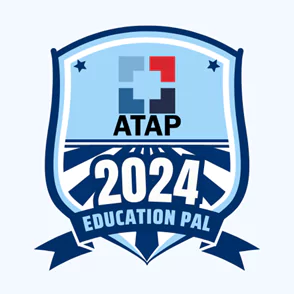
If your AT Act Program is interested in establishing a relationship with your State Education Agency (SEA), or Local Education Agency (LEA) or perhaps improving an already established collaboration or partnership, you are an ideal candidate to register!
If you’d like to learn more about whether your AT Act Program has the readiness skills or wants to obtain the readiness skills to have a successful collaboration or partnership with the SEA, you are an ideal candidate to register!
Each webinar in the Education PAL 2024 Cohort targets one or more areas that have the potential to take AT Act Programs forward in their pursuit of improving core programs and services for students with disabilities.
AT Act Programs are better equipped to fulfill their mission when they increase skills, knowledge, and competencies in areas of:
- Law/compliance, communication/advocacy,
- AT devices,
- Quality Indicators for AT service delivery,
- AEM and digital accessibility, and
- Funding related to education.
Strong relationships/partnerships/collaborations between SEAs and AT Act Programs can have a greater impact and change the learning landscape for these students better than either could do on their own.
Completion of this PAL Cohort will provide attendees with the knowledge, skills, and competencies in the areas of AT, AEM, and digital accessibility to provide better/higher quality:
- Information and Assistance to parents, educators, related service providers and administrators.
- Public Awareness (PA) about programs and services available
- Education/Training for all applicable audiences to assist on all topics covered
- Relationships/Collaborations/Partnerships
Building capacity in these State Leadership activities should lead to increased State Level activities:
- Device demonstrations
- Device short-term loans
- Alternative financing activities
- Device reutilization
Education and advocacy efforts are known factors to help remove attitude, knowledge, practice, and policy barriers that may prevent SEAs, LEAs, and even AT Act Programs from more fully serving students with disabilities.
Altogether, the cohort presented by subject matter experts in the field of AT and Education has the potential to improve AT Act Programs’ readiness to
- partner with SEAs,
- assist with strategizing and initiating a partnership,
- add value to existing relationships/collaborations/partnerships, and
- ultimately increase resources available to support students with disabilities.
Register for the Education Peer Action Learning 2024 Cohort with this form. The expectation is that registrants attend ALL offered sessions. Make-up sessions will be available via recordings and completed evaluations. Deadline for registration is January 19, 2024. Brochure available to share with staff and partners.
Education PAL Webinars & Coaching Sessions
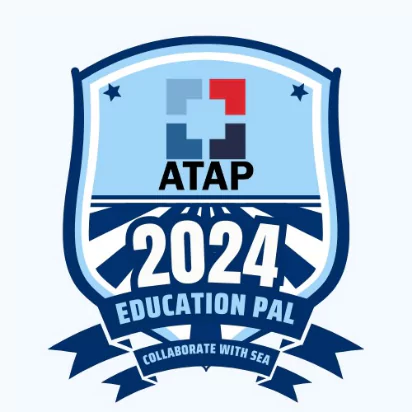
How to Effectively Collaborate with Your State Education Agency – Compliance with the 21st Century Assistive Technology Act
Wednesday, January 24, 2024 (ATIA Preconference)
Presenters: Audrey Busch, Association of Assistive Technology Act Programs and John Eisenberg, National Association of State Directors of Special Education
Purpose: This segment of the pre-conference will focus on the new AT Guidance from the Office of Special Education and Rehabilitative Services (OSERS) that directs attention to the role of assistive technology (AT) in education, and how AT Act Programs and State Education Agencies can collaborate to advance increased access to and acquisition of AT in educational settings.
Agenda
Introduction and Welcome – Linda Jaco, ATAP Grant Manager
1:00 – 1:30 Overview of New AT Guidance, Keynote Address, Valerie Williams, Director of Office of Special Education Programs (OSEP) within the Office of Special Education and Rehabilitative Services at the U. S. Department of Education and responsible for overseeing the administration of the Individuals with Disabilities Education Act (IDEA).
1:30 – 2:00 Opportunities for AT Collaboration, Presenters: Audrey Busch, Executive Director of the Association of Assistive Technology Act Programs (ATAP) and John Eisenberg, Executive Director of the National Association of Special Education (NASDSE)
2:00 – 2:50 Oklahoma Partnership, Presenter, Allyson Robinson, Oklahoma ABLE Tech
2:50 – 3:10 Break
3:10 – 3:30 Introduction of the Education Peer Action Learning (PAL) Cohort, Presenter, Linda Jaco, AT3 Grant Manager
3:30 – 4:30 Round Table Discussion – Q & A: Invited Panel: Facilitator: Laura Kaloi, Stride Policy
- Tina Diamond, U.S. Department of Education
- Anita Vermeer, U.S. Department of Education
- Cynthia Curry, Institute for Disability Research, Policy & Practice at Utah State University
- Brian Wojcik, (in place for Gayl Bowser, Educational Consultant – Assistive Technology Collaborations and organizer of the State Leaders in Assistive Technology (SLATE))
- Audrey Busch, ATAP Executive Director
- John Eisenberg, NASDSE Executive Director
- AT Act Programs
- State Education Agencies
Registration
ATIA Pre-Conference Registration (Required)
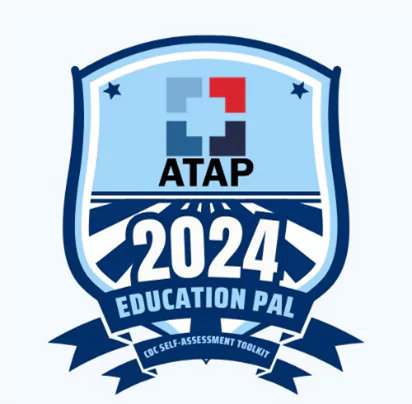
CDC Self-Assessment Toolkit
Wednesday, February 14, 2024 (Webinar)
Wednesday, February 21, 2024 (Coaching Session)
Presenter: Allyson Robinson, Oklahoma ABLE Tech
Purpose: Participants will have a guided interactive experience with the CDC Self-Assessment Toolkit. By examining strengths and weaknesses in targeted areas, AT Act Programs will be better able to determine their readiness to partner with a SEA. Answers discovered through the self-assessment tool will guide an AT Act Program in developing and making progress towards goals that result in a more successful relationship/collaboration/partnership with their SEA.
Webinar Time/Location: 3:00 – 4:30 PM ET
Coaching Session Time/Location: 1:00 – 2:30 PM ET
Contact: Jamie.Anderson@ataporg.org
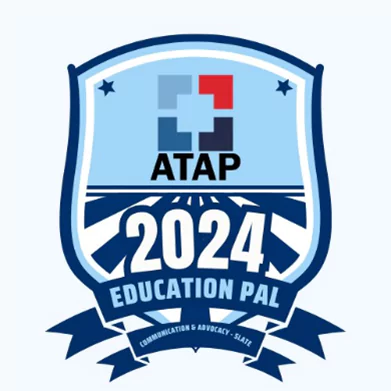
Communication/Advocacy Efforts/SLATE
Wednesday, March 13, 2024 (Webinar)
Wednesday, March 20, 2024 (Coaching Session)
Presenter: Gayl Bowser, State Leaders in Assistive Technology in Education
Purpose: Education and advocacy efforts are known factors to help remove attitude, knowledge, practice, and policy barriers that may prevent SEAs, LEAs, and even AT Act Programs from more fully serving students with disabilities. This webinar will share information about the importance of effective communication as well as the ongoing value gained from joining a professional AT learning community – State Leaders of Assistive Technology in Education (SLATE).
Webinar Time/Location: 3:00 – 4:30 PM ET
Coaching Session Time/Location: 1:00 – 2:30 PM ET
Contact: Jamie.Anderson@ataporg.org
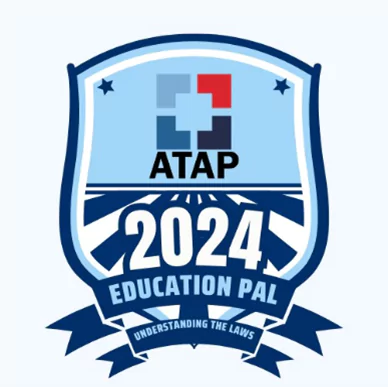
Understanding Key Laws that Govern the Provision of AT Devices and Services in Birth-3 and K-12 Settings
Wednesday, April 10, 2024 (Webinar)
Wednesday, April 17, 2024 (Coaching Session)
Presenter: Angela Standridge and Shannon Paige, Texas Technology Access Program
Purpose: This webinar will provide an overview of federal laws that protect students with disabilities in educational settings: Sections 504 and 508 of the Rehabilitation Act, Individuals with Disabilities Education Act ’04 (IDEA), the Americans with Disabilities Act (ADA), Every Student Succeeds Act (ESSA), and the 21st Century Assistive Technology Act. AT Programs may also have to identify state education laws, administrative codes, policies and procedures, and guidance when supporting AT in education. Collaborating with State Education Agencies (SEAs) and local education agencies (LEAs) in implementing these state and federal laws with fidelity is within the scope of practice for AT Programs. This will support student success and long-term outcomes, as well as meet LEA and state obligations.
Webinar Time/Location: 3:00 – 4:30 PM ET
Coaching Session Time/Location: 1:00 – 2:30 PM ET
Contact: Jamie.Anderson@ataporg.org
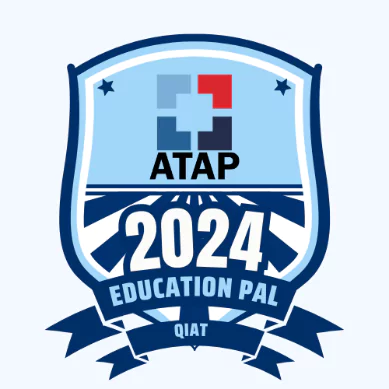
Quality Indicators for Assistive Technology (QIAT) – Resources and Transition
Wednesday, May 8, 2024 (Webinar)
Wednesday, May 15, 2024 (Coaching Session)
Presenter: Brian Wojcik, Nebraska AT Program
Purpose: This webinar will provide an overview of the eight areas of the Quality Indicators for Assistive Technology (QIAT) that are important to the development and delivery of assistive technology (AT) devices and services: Consideration of AT Needs, Assessment of AT Needs, AT in the IEP, AT Implementation, Evaluation of Effectiveness of AT, AT in Transition, Administrative Support for AT, and AT Professional Development.
Webinar Time/Location: 3:00 – 4:30 PM ET
Coaching Session Time/Location: 1:00 – 2:30 PM ET
Contact: Jamie.Anderson@ataporg.org
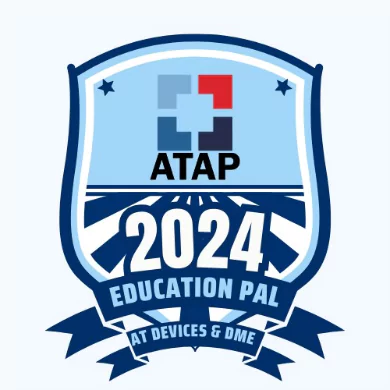
AT Device Inventory for Students (Demo/Short-term Loan); Pediatric Durable Medical Equipment (DME) Reutilization
Wednesday, June 19, 2024 (Webinar)
Wednesday, June 26, 2024 (Coaching Session)
Presenter: David Baker, Missouri AT Program
Purpose: Participation in this webinar will provide information on the types of education-related AT devices needed in a program’s inventory to provide demonstrations and short-term loans for students with disabilities. Attendees will also learn about the importance of pediatric DME being available for students who need it to attend and function in the school setting.
Webinar Time/Location: 3:00 – 4:30 PM ET
Coaching Session Time/Location: 1:00 – 2:30 PM ET
Contact: Jamie.Anderson@ataporg.org

Digital Accessibility
Wednesday, July 10, 2024 (Webinar)
Wednesday, July 17, 2024 (Coaching Session)
Presenter: Lyssa Prince, Oklahoma ABLE Tech
Purpose: Attendees will learn how Digital Accessibility helps bridge the gap between the physical assistive technology (AT) devices people use and digital environments like the internet, mobile apps, or digital documents. Also discussed will be how the timely provision of access to digital environments in educational settings is relevant to providing a Free and Appropriate Public Education (FAPE).
Webinar Time/Location: 3:00 – 4:30 PM ET
Coaching Session Time/Location: 1:00 – 2:30 PM ET
Contact: Jamie.Anderson@ataporg.org
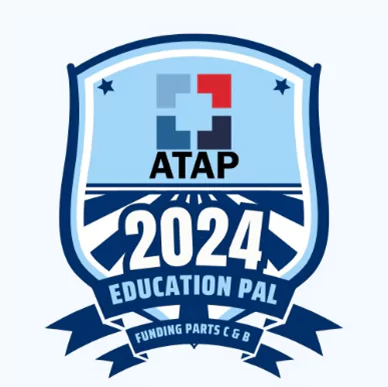
How to Fund Parts C and B
Wednesday, August 14, 2024 (Webinar)
Wednesday, August 21, 2024 (Coaching Session)
Presenter: Allyson Robinson, Oklahoma ABLE Tech
Purpose: IDEA states that the local education agency must ensure the provision of AT devices and/or services to a student with a disability if required as a part of the child’s special education, related service, or supplementary aids and services. This session will share information and examples of multiple ways to fund needed AT for students with disabilities.
Webinar Time/Location: 3:00 – 4:30 PM ET
Coaching Session Time/Location: 1:00 – 2:30 PM ET
Contact: Jamie.Anderson@ataporg.org
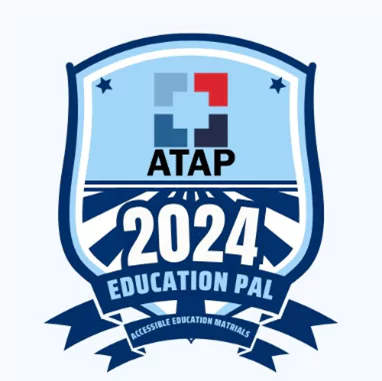
Accessible Educational Materials (AEM) and AT
Wednesday, September 11, 2024 (Webinar)
Wednesday, September 18, 2024 (Coaching Session)
Presenter: Cynthia Curry, Institute for Disability Research, Policy & Practice at Utah State University
Purpose: An educational material can be designed to be accessible for a learner with a disability from the beginning, or it can be converted to another format that meets the student’s functional needs. The goal is that the student can use educational materials for learning or assessment in general education. This session will provide the basics of understanding accessible educational materials (AEM) as related to the Individuals with Disabilities Education Act (IDEA).
Webinar Time/Location: 3:00 – 4:30 PM ET
Coaching Session Time/Location: 1:00 – 2:30 PM ET
Contact: Jamie.Anderson@ataporg.org
Questions or Issues?
If you have any questions about the webinars, or issues with registration, please email Jamie.Anderson@ataporg.org for assistance.
Housing and Transportation Technical Assistance Centers
The Technical Assistance (TA) and Resource Centers listed below provide a range of services supporting, providing, and coordinating accessible Transportation and Housing services to support individuals to live successfully in their communities. You can find out more about the Federal Transit Administration (FTA) and the Administration for Community Living (ACL) Housing Technical Assistance and Resource Centers below.

The Housing and Services Resource Center was created for people who work in the organizations and systems that provide housing resources and homelessness services, behavioral and mental health services, independent living services and other supportive services, and others who are working to help people live successfully and stably in the community.
The Housing Choice Voucher (HCV) Program is the federal government’s major program for providing housing assistance to over 2.3 million American families.
The Fall Prevention Center of Excellence (FPCE), based at the University of Southern California Leonard Davis School of Gerontology, is dedicated to promoting aging in place and independent living for persons of all ages and abilities. It offers research, training, and technical assistance for home modification and fall prevention services in the home environment. FPCE also serves as an information clearinghouse on home modification to equip professionals and consumers with a comprehensive inventory of resources.
NADTC’s mission is to promote the availability and accessibility of transportation options for older adults, people with disabilities, and caregivers.
CTAA and its members believe that mobility is a basic human right. From work and education to life-sustaining health care and human services programs to shopping and visiting with family and friends, mobility directly impacts quality of life.
N-CATT’s mission is to translate emerging transportation technologies for states and localities across the United States.
SUMC’s mission is to achieve equitable, affordable, and environmentally sound mobility across the US through the efficient sharing of transportation assets.
National RTAP’s mission is to address the training and technical assistance needs of rural and tribal transit operators across the nation, and support state RTAP programs.
Transit Planning for all is an inclusive and coordinated transportation-planning project that has funded a series of pilot projects across the nation. On these pages you will find resources to help communities plan, conduct, evaluate, and sustain inclusive planning programs to improve local transit services and options. Our mission is to increase inclusion in transportation planning and services for people with disabilities and older adults.
ADA PARC publishes maps that assist policy makers, community leaders, transportation developers and state leaders in understanding transportation needs and opportunities for improvement.
PRC provides information for traveling with your wheelchair and makes grants to communities to increase access to transportation and technology.
International Transportation Learning Center is the only national organization that focuses on the frontline workforce in public transportation and transportation in general. It is the only organization funded by the Federal Transit Administration, the US Department of Labor, and the Transit Cooperative Research Program to develop and support technical training partnerships for today’s and tomorrow’s front-line work force.
The Transit Workforce Center (TWC) supports the workforce development needs of urban, suburban, tribal, and rural public transportation entities, with an overarching mission to assist the industry as it recruits, hires, trains, and retains the diverse workforce needed now and in the future.
NCMM’s mission is to promote customer-centered mobility strategies that advance good health, economic vitality, self-sufficiency, and community.
Webinars

Webinars
Making Accessible Videos, January 18, 2024 (video)
AT ACCESS Interface, October 19, 2023 (video)
Assistive Technology and Accessible Transportation (video)
Reeve Foundation Quality of Life Grants (video)
Assistive Technology: Making Connections, August 9, 2023 (video)
Assistive Technology Making Connections August 9 2023 (PDF)
Tribal VR: Taking Care of our Relatives, August 8, 2023 (video)
Tribal VR Serving Relatives with Disabilities August 8 2023 (PDF)
Assistive Technology Public Health Workforce Grant 2023 (video)
Emergency Solutions for Powering DME and AT 2022 (video)
Emergency Power Solutions for DME and AT 2022 (PDF)
Creating and Using Videos Effectively 2022 (video)
State Plan for AT: Data Entry 2022 (video)
Public Health Workforce Q&A with ACL (video)
Public Health Workforce FAQ (PDF)
AT3 COVID-19 Webinars
Archived recordings of AT3 COVID-19 webinars are also available on the Emergency Management – Cororna Virus (COVID-19) Pandemic page.
So You’re Planning a Virtual AT Conference (video)
Entering the Green Zone (video)
Texas Center for Disability Studies Presentation (PDF)
Assistive Technology for Kansans Presentation (PDF)
MonTECH’s Cleaning and Disinfection Procedures (PDF)
Resuming Services (PDF)
Practices (PDF)
Managing Social Isolation, Anxiety and Depression through the Use of Assistive Technology Tools (Video)
Managing Social Isolation AT3 Webinar (PDF)
Captioning Video Meetings and Trainings (Video)
J Brandt – AT3 Captioning Video Meetings and Trainings (PDF)
Protection and Advocacy during the Coronavirus Pandemic (Video)
Video Conferencing and Project Management (Video)
A Standridge – How to Use Zoom (PDF)
Virtual AT Demonstrations (Video)
AT Programs Operating in a Remote Environment (Video)
Using Zoom to Conduct Remote Training (Video)
Using Zoom to Support AT Activities (PDF)
Device Demonstration and Loan
Archived materials of Community of Practice webinars are also available on the the relevant CoP page
2022
2021
Zpods your Introduction to a Customizable Sleep Environment (video)
Presentation PowerPoint (PDF)
What’s New in Device Loan and Demonstration Inventories (video)
2020
Mobile Device Management (video)
Teltex (video)
Avaz (no video available)
Presentation PowerPoint (PDF)
GrandPad (video)
Presentation PowerPoint (PDF)
2019
CaptionMate (video)
Tippy Talk (video)
Prentke Romich-Saltillo products and supports (video)
A Few of My Favorite Things (no video available)
Presentation PowerPoint (PDF)
Lingraphica (video)
Eyegaze (video)
Demo/Loan Inventory Management (video)
Attainment-GoTalk (video)
2018
MyNotify-Wearable Technology (video)
Demo/Loan CoP Update (video)
Presentation PowerPoint (PDF)
App2Speak (video)
Demo Loan CoP Update (no video available)
Presentation PowerPoint (PDF)
Referenced Products (PDF)
OrCam MyEye 2.0 (no video available)
Presentation PowerPoint (PDF)
Strategies for Promoting Awareness of Your Demo and Loan Program (no video available)
Listing of Electronic Media Used by State AT Programs (PDF)
2017
Mountn’ Movers (no video available)
Mountnmover Outline – What to Consider When Selecting a Mounting System (PDF)
Considerations for AT Programs When Including Mount’n Mover in Their Inventory (PDF)
Smartbox (no video available)
Smartbox Considerations in Demonstration or Lending (PDF)
Phonak-Roger (no video available)
Presentation Outline (PDF)
Challenges of Demo-Loan of Internet-Dependent Devices (no video available)
Presentation Notes (PDF)
Presentation Outline (PDF)
Internet Protocol Captioned Telephones-PA (PDF)
ICT
Archived materials of Community of Practice webinars are also available on the relevant CoP page
2021
ICT Accessibility in Technology Purchase and Use Decisions (Video)
Manual Accessibility Testing (Video)
Automated Accessibility Testing (Video)
Accessibility for Web Content Authors (Video)
2020
Accessible PDF Forms (Video)
Accessible Lists and Tables in PDF (Video)
Remediating an Inaccessible PDF (Video)
Introduction to Accessibility in PDF (Video)
Accessibility in PowerPoint (Video)
2019
Basic Web Accessibility Testing on the Cheap (Video)
AT3 Intro to Accessibility (Video)
ICT Accessibility Activities and Reporting (Audio)
Transcript (PDF)
Most AT3 archived webinars can also be found on the AT3 YouTube Channel . Subscribe today!
Go to Events by State AT Programs
Go to a listing of Other National AT Events
Explore AT
Overview
Explore AT (Assistive Technology) is a clearinghouse for information and resources on many different assistive technologies. It will help you identify AT devices and services in the environments of education, employment, and community living for all ages and functional abilities.
You can go to the Explore AT national assistive technology public internet site which includes resources arranged by activity. You will also find some useful resources below to help you find AT devices and services. Always remember to contact your State AT Program for free assistive technology information and assistance in your state.

Finding and Buying Assistive Technology
So, you think you know what product you need, and you are going to buy it with your own funds. How can you be sure you are selecting the “right” product? How can you get the best price? Here’s a few hints to get you started (Note: Any companies or websites listed are for illustrative purposes only; no endorsement implied).
Your State AT Program is a Good Place to Start
A good way to think about assistive technology (AT) is by identifying function – what is it the device will help a person with a disability do, like read text, type, hear the TV, dial the phone, rise more easily from a chair – rather than by diagnosis, e.g. AT for people with Parkinson’s, age, e.g. AT for seniors, or by setting, e.g. AT for work. Contact your state AT program for “information and assistance” to help narrow down a category. Depending upon the cost and complexity of the device in which you are interested, they may recommend you explore a formal evaluation, and/or suggest that you borrow the item from their device lending program. The state AT program may also offer to arrange a demonstration that provides you with “hands on” experience with AT devices. State AT Programs provide many free services (pdf). Most often there is no charge for information and assistance or a device demonstration. There is sometimes a nominal fee associated with borrowing a device to help cover shipping costs.
Ask your State AT Program for a demonstration of comparable products that have similar features but different prices.
If there’s a specific product you heard about, the state AT program may be able to introduce you to another device with more (or fewer) features that better fit your needs and pocketbook! Or, check out two or more similar devices from your state AT program’s lending library, to try before you buy.
Your State AT Program may be able to help you find funding sources.
Even if you think paying “out of pocket” is the only way to get the AT you want, the state AT program may know of other possibilities – public programs, community organizations, or other sources for grants or cash loans. In addition, some state AT programs administer programs that distribute specialized equipment such as telecommunication devices to eligible residents. Use the Find Your State Program directory to identify program services (i.e. other state financing) and a contact in your state. Funding sources, programs, and services vary from state to state.
Use your credit card with care.
If you are using a credit card and will not be paying off your monthly bill “in full”, you could be adding anywhere from 12% to 24% to the cost of the item, depending upon your interest rate. You may be better off with favorable terms offered by one of the “alternative financing programs” around the country; search the Find Your State directory to find the cash loan program in your state.
Shop mainstream retailers’ stores, catalogs, and websites.
Especially when it comes to products that might be useful for people without disabilities such as ergonomic keyboards or home automation systems, “generic” retailers like Best Buy, Staples, Home Depot, CVS or Walmart may carry the product in which you are interested. While Best Buy’s website recognizes the term “assistive technology” other sites list products under headings such as “health and wellness”, “disability aids”, and “home health care”. Compare these prices with other mainstream retailers, as well as with “specialized” resellers.
Comparison shop among “specialized” resellers.
Some assistive technology companies compile items from a range of manufacturers or vendors. Depending on the size of the company and other factors, prices may vary considerably. A recent search found variation of more than $100 for a “Go Talk 20+” communication device among such vendors as Attainment Company and Alimed. Amazon has a “Special Needs Storefront” department which provides several vendor options for a single product.
Factor in additional costs like shipping and handling.
Shipping and handling costs can add dollars to the purchase price. Consider whether the item is available at a nearby “brick and mortar” retailer, or whether free shipping is available (e.g. for Amazon “Prime” members).
Cheaper isn’t always better.
Check product reviews on websites, Facebook, and other sources. What do reviews say about the durability and functionality of the product? Warranty and customer service? Return policy?
Explore AT Device Databases
AgrAbility
The AgrAbility Toolbox: Agricultural Tools, Equipment, Machinery & Buildings for Farmers and Ranchers with Physical Disabilities is a resource that contains assistive technology solutions for farmers, ranchers, and other agricultural workers with disabilities.
Bridging Apps
Bridging Apps is a program of Easter Seals Greater Houston that provides access to educational and therapeutic tools—anywhere, anytime—allowing parents, teachers, and therapists to effectively use mobile devices and apps to target and improve individual skill development to help children and adults with disabilities reach their highest levels of physical and cognitive development.

iAccessibility
iAccessibility is an online complete resource for everything related to accessibility of Apple devices including videos, podcasts, accessibility apps, and resources.
Tech Finder
Tech Finder is an online database of expert approved apps and games for children with learning and attention difficulties.
Tech Toolbox
The Arc’s Tech Toolbox is a place to find, share, rate, and review technology for people with intellectual or developmental disabilities.
Unified Listing
Unified Listing is a central database that stores information about assistive technology solutions and access features in mainstream products. For access to communication, computers and digital devices the site brings together information from 12 different databases in Europe, the US and Australia.

Explore National AT Information Resources
National Rehabilitation Information Center (NARIC)
The National Rehabilitation Information Center (NARIC) maintains a research library of more than 65,000 documents and responds to a wide range of information requests, providing facts and referral, database searches, and document delivery. NARIC maintains REHABDATA, a bibliographic database on rehabilitation and disability issues, both in-house and online. Users are served in English and Spanish by telephone, mail, electronic communications, or in person. NARIC also prepares and publishes the annual NIDILRR Program Directory, available in database format from NARIC’s web site, and several regular publications highlighting NIDILRR research.
Center on Technology and Disability
The Center on Technology and Disability (CTD) was designed to increase the capacity of families and providers to advocate for, acquire, and implement effective assistive and instructional technology (AT/IT) practices, devices, and services. CTD ended in May 2019. However, its legacy website still provides a Library of multi-media, multi-lingual resources and webinars.
Job Accommodation Network (JAN)
JAN is a consulting service that provides information about job accommodations and the employability of people with disabilities.
Partnership on Employment & Accessible Technology (PEAT)
The Partnership on Employment & Accessible Technology (PEAT) is a multi-faceted initiative to foster collaboration and action around accessible technology in the workplace. Guided by a consortium of policy and technology leaders, PEAT works to help employers, IT companies, and others to understand why it pays to build and buy accessible technology, and how to do so.
Connect with AT3 Center on Social Media
Issue Briefs on AT Policy
The following Issue Briefs have been developed by the AT3 Center to support State AT Program efforts to increase access to and acquisition of assistive technology.
Education
Issue Brief on Transfer of School-Purchased Assistive Technology Devices (word)
A review of federal policies related to transferring AT devices from school to post-school settings for transitioning students, an overview of state/local policies and programs that have been implemented to support such equipment transfer and a discussion of options that might be considered.

Employment
Workforce Investment Opportunity Act (WIOA) and Pre-Employment Transition Services (Pre-ETS)
This brief clarifies when WIOA Pre-ETS funding can be used to support assistive technology and when such funds cannot be used for AT.
Health Care
Connecticut’s CARES Act “Stay Connected” Program (video)
AT3 Center – Connecticut Stay Connected Program (PDF)
The Affordable Care Act (PDF)
This brief provides a high level overview of the Affordable Care Act (ACA) and how it supports access to and acquisition of assistive technology under various provisions of the ACA.
Voting
Accessible Absentee Voting 2020 (PDF)
This one-page analysis reviews issues related to accessible absentee voting in 2020.
Legal Requirements for Voting Accessibility (PDF)
This brief provides a review of the legal requirements for voting accessibility with particular attention to the accessibility of voting systems used by individuals with disabilities to mark, verify, and cast an official ballot.
Every Student Succeeds Act (ESSA)
ESSA and Accessibility (PDF)
This brief provides highlights of the ESSA accessibility requirements for assessments used for accountability purposes along with general web accessibility requirements and how they intersect with ESSA provisions for information dissemination. While the ESSA rules have been rescinded, the statute provisions still apply and the prior rule language on accessibility is instructive.
State AT Warranty Legislation
This electronic resource document provides links to the legislation for all states and territories who have an AT Warranty Act (frequently referred to as lemon laws).
State Improvement Initiatives
Overview
State initiatives are those activities undertaken by the state AT program to effect substantive changes in legislation, policy or practices of agencies and organizations. Examples include technical assistance to:
- The state’s department responsible for procurement of information and communication technology
- A county’s election commission
- A managed care contractor of the state Medicaid program
- Aging services
- Education systems
- Employment systems
- Health and Human Services systems and processes
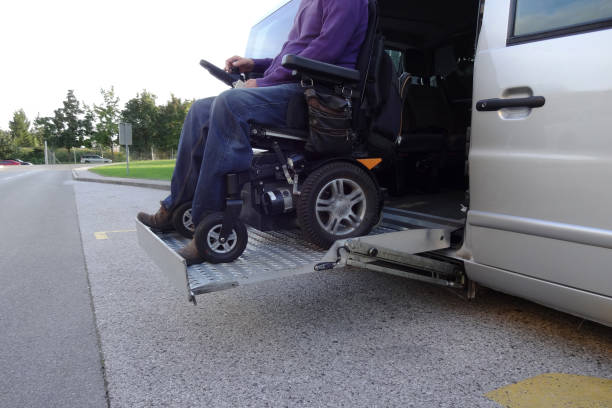
The purpose of undertaking such activities is to improve access to and acquisition of assistive technology (AT) devices and services, and includes efforts to assure equal access for people with disabilities (e.g. to voting, high-stakes testing, employment). State improvement efforts may involve training, technical assistance, and other activities designed to result in positive changes in outcomes for people with disabilities. This section also includes guidance documents that provide an overview and/or clarification of federal laws and policies that affect access to and acquisition of AT.
Click on a link below to go to more information on that topic.
Issue Briefs on AT Policy
Emergency Management
High Impact Innovative Assistive Technology (HIIAT) Grants
An archived webinar from June 11, 2020, this session introduced the 2020 HIIAT grant from the Christopher and Dana Reeve Foundation, as well as innovative projects from past and present grantees.
High Impact Innovative Assistive Technology HIIAT Grants 2020 (video)
High Impact Innovative Assistive Technology (HIIAT) Grants (PDF)
HIIAT Reeve Foundation Slides (PDF)
HIIAT Electronic Gaming Project – Kansas (PDF)
HIIAT Community Rehab Project – Indiana (PDF)
HIIAT Smart Home First Project – North Dakota (PDF)
Voting Accessibility
AT3 Road Map for New Directors
Introduction
Welcome to the AT3 Road Map for New Directors, an orientation guide for new Section 4 AT Act Program Directors.
The following suggestions are meant to help you get started by drawing your attention to critical information and related resources in a helpful sequence. We suggest you tackle one heading or subheading every day, although these will range from just a few minutes to an hour or more (especially if follow up steps are indicated!). Be sure to contact your AT3 technical assistance provider if you have questions as you go.
Please note that any reference to “AT Act Programs” throughout this document includes all funded Section 4 AT Act Programs (all 50 U.S. states, District of Columbia, Puerto Rico, and the U.S. territories of American Samoa, Guam, Northern Mariana Islands, and Virgin Islands).
Terms in italics are ones you may not be familiar with but are important to understanding and administering the program.
We encourage you to explore and familiarize yourself with the AT3 Center website. The content on this site along with many downloadable documents and other links can help you as you get oriented to and grow in your role as an AT Act program director. New information is continually added and currently posted documents and other resources are updated as needed. Under the AT Act Grantees header you will find information on program administration, state level and state leadership activities, state improvement initiatives, and Communities of Practice. The AT Act Information section contains links to the AT Act law, frequently asked questions related to the Act, and related resources. The following suggestions will frequently be referring to these sections and resources. Navigate to these by using the active links which will open in new tabs in your browser or be available in your device downloads folder as appropriate.
What’s What and Who’s Who
Acronyms and Laws
The Acronyms and Laws is located on the Program Administration General Resources page. Keep this quick reference handy as you will encounter these acronyms and laws in other materials and discussions.
Who’s Who
A Who’s Who document introduces you to people from:
- Association of Assistive Technology Act Programs (ATAP)
- National Assistive Technology Act Technical Assistance and Training Center (AT3)
- Center for Assistive Technology Act Data Assistance (CATADA)
- Administration for Community Living (ACL)
These individuals are available to assist you. Add them to your “contacts” and please be sure to do the following:
- Contact your AT3 TA provider to schedule an introductory meeting.
- Contact Jamie Anderson to join the Grantee Directors listserv, as well as other Communities of Practice listservs you are interested in joining.
- Contact Vance Dhooge for access to NATADS.
- Contact Rob Groenendaal to be sure he has your correct contact information.
The 21st Century Assistive Technology Act
The Law
You will want to become familiar with the legislation itself. There are several resources on the AT Act Information page. We suggest the following sequence for an understanding of the law that is critical to state AT Act programs:
- Start by reviewing the Summary of AT Act Requirements document for a big picture overview.
- After you are comfortable with the summaries provided in the document and slides, read the law itself.
- The AT Act differentiates between entities who are the program’s lead entity and those who are the implementing entity. Additionally, there are programs where the lead and implementing entity are one in the same. Make sure you understand these terms and where your program fits.
- Continue with the suggestions in this guide to achieve a deeper comprehension of the detailed requirements.
Note that you may find it helpful to have a copy of the law in which you can easily mark information and make notes for frequent quick reference. You will find copies of the AT Act in word and pdf formats on the AT Act information page.
Required Activities
State Level Activities
After reading the AT Act, you should have an understanding of how key activities are divided into state level and state leadership. State level activities are further divided into those that support access to assistive technology (device demonstration, device lending for decision making) and those that support acquisition of AT (state financing, reutilization, and device lending not for decision making). The State Level Activities page provides brief descriptions of these activities and links to detailed pages for each activity. You will find information on each of these more detailed pages that includes definitions, performance measures, data collection, “Frequently Asked Questions” and resources.
- Start by reading the definitions and “Frequently Asked Questions” sections for each activity.
- Familiarize yourself with how your program conducts each of these activities in your state.
- Revisit each of these pages once you are ready to move on to information about budgeting as well as data collection elements and required reporting.
State Leadership Activities
State leadership activities include training, technical assistance, and public awareness (which includes information and assistance). The State Leadership page provides brief descriptions of these activities and links to detailed pages for each activity.
- Start by reading the definitions and “Frequently Asked Questions” sections for each activity.
- Learn the differences between technical assistance, training, information and assistance, and public awareness.
- Understand the requirements for training and/or technical assistance on transition and accessible information and communication technology (ICT).
- Familiarize yourself with how your program conducts each of these activities in your state.
- Revisit each these pages once you are ready to move on to information about budgeting as well as data collection elements and required reporting.
Program Administration
There is a great deal of information available for Program Administration. You will find more detailed webpages for different administrative requirements including Administrative Guidance documents and more general resources.
The AT Act programs are formula-funded mandatory grants with unique requirements. It is important that you understand the difference between these programs and other types of discretionary grants. If you need to learn more about this, the Understanding Types of Grants and Associated Funding document provides a good overview.
Advisory Council
As you learned when you reviewed the AT Act, there is a statutory requirement to establish an advisory council “to provide consumer-responsive, consumer-driven advice to the State for, planning of, implementation of, and evaluation of the activities carried out through the grant, including setting the measurable goals described in subsection (d)(3)”. Additional information, including FAQs, is available on the State Advisory Councils page.
- Review the composition of your program’s Advisory Council soon after you begin your tenure as director.
- Verify that the representation requirements are satisfied.
- Meet with your Advisory Council, face-to-face if possible, in your first few months of leadership.
- Learn the strengths and expertise of your individual members and Council as a whole.
Required Federal Reporting
There are two major federal reporting requirements: the State Plan for Assistive Technology and the Annual Progress report. We suggest you:
- Review the Annual AT Data and Fiscal Calendar document and enter the dates in your calendar and/or keep handy for easy reference.
- Use the Summary of AT Act Section 4 Grantee Requirements document as a reference for requirements and compliance.
State Plan for Assistive Technology (SPAT)
Once every three years, each funded program is required to develop a State Plan for Assistive Technology, updated annually when there are significant changes. The State Plan serves as the application for Section 4 AT Act formula funding and identifies which AT Act activities the grantee will conduct and how they will be implemented. The plan is reviewed by ACL to ensure it conforms to the requirements of the AT Act.
- Familiarize yourself with your program’s current approved State Plan. You can find it at the CATADA website.
- After you have read your program’s approved plan, explore the Instructions for the State Plan and the other resources found on the CATADA website.
- As you review the instructions for completing the State Plan, you will note information regarding “flexibility” and “comparability”. These terms have implications for both data collection and fiscal administration. Pay particular attention if your state claims flexibility or comparability for any state level activity.
- If needed, read the administrative guidance document on Flexibility and Comparability – Data Reporting for a greater understanding of these options and their implications.
- Now that you have familiarized yourself with how your state carries out state level and state leadership activities and you have read your state plan, ensure that what your state is doing aligns with what is in your State Plan.
Annual Progress Report (APR)
Every state AT program is required to submit the Annual Progress Report (APR) by December 31 of each year. The APR covers the period of October 1st through September 30th of each federal fiscal year and includes all the data elements required by Section 4(f) of the AT Act for state financing, device loan, reuse, device demonstration, training, technical assistance, public awareness, information and referral, state improvement outcomes, and leveraged funding. APR data must be reported for each activity included as part of your State Plan for AT.
CATADA has developed and supports the web-based data reporting system for the Annual Progress Report (APR) called the National Assistive Technology Act Data System (NATADS). This is the data reporting system used by state AT programs to submit the required data elements of the APR in accordance with the AT Act mandates.
- Familiarize yourself with the CATADA website and available tools and resources.
- Use the CATADA data tools to run a few reports to identify trends (e.g. your state’s performance over several years, by activity). Keep in mind that comparing your data with a demographically similar state can be misleading due to differences in many variables (i.e. federal funding level, leveraged funding levels, program structure, available resources, etc.).
- Read the AT3 Center administrative guidance document Why Data Matters: How Your Assistive Technology Data Can Work for You for suggestions on using your data to analyze and gain insights into program performance and inform your planning and program delivery.
Performance Measures
The measurable goals set by ACL for the state AT programs are referred to as performance measures. Data is collected and analyzed within the contexts of education, employment, or community living for access and acquisition activities. The percentage of goal attainment is auto-calculated in the APR. Performance measures are set by ACL in three areas: (1) AT access activities as a target percentage of individuals and entities who accessed device demonstration programs or device loan programs and made a decision about an AT device or service as a result of the assistance they received; (2) AT acquisition activities as a target percentage of individuals and entities who obtained devices or services from state financing, reutilization, or non-decision making device loan activities who would not have obtained that AT device or service absent the activity; and (3) ICT accessibility focused on obtaining an outcome/result from information and communication technology accessibility training including improvement of policies procedures or practices in the areas of website and software development and procurement.
- Review your program’s success in achieving the ACL measurable goals in the prior year’s APR.
- Review your program’s progress towards meeting the current fiscal year’s measurable goals set by ACL.
Day-to-Day Data Collection System
NATADS’ primary purpose is to serve as the official APR data collection mechanism for reporting aggregate data by the Section 4 formula funded grantees. However, NATADS also has a web-based “day-to-day” (D2D) data collection system that can optionally be used by Section 4 State AT Programs for collecting and managing data reporting for all activities included in the State Plan for AT and required by the Annual Progress Report (APR). This system covers all the required data elements for all Section 4 authorized State AT Program activities, State Financing, Reuse, Device Loan, Device Demonstration, Training, etc. The system allows for data entry by multiple people and sites in an online format with the State AT Program controlling access and includes validation rules to ensure the aggregate data will be clean for end of year reporting in the APR. Numeric aggregate data from the D2D component of NATADS will automatically populate into the APR. You will want to:
- Become familiar with whatever data collection system(s) your program uses.
- If applicable, become familiar with the method(s) by which data is reported by subcontractors or other partners.
- You may wish to discuss data collection systems with your AT3 TA provider.
Fiscal Management
The AT3center.net site has many reference documents for Fiscal Management. We suggest:
- Familiarize yourself with the available administrative guidance topic areas.
- If you are new to grants management, read the HHS Rules important highlights summary document then review and familiarize yourself with the Office of Management and Budget (OMB) Grant Rules.
- Identify how your program ensures you adhere to OMB requirements.
- Be certain you know if your state uses either the comparability or flexibility option and why it does so (previously discussed under the State Plan section).
- Read the administrative guidance document on State Plan Expenditure Tracking and Reporting.
- Learn your internal fiscal tracking system(s) and ensure they meet the AT Act budgetary requirements.
- Be familiar with your program’s history for obligating and liquidating fiscal funds as required. If your program has had lapsed funding (funds that were not drawn down on time) find out what happened and if there is a problem that is likely to re-occur. If there is, contact your TA provider and federal project officer immediately.
- Meet the people in your organization who are responsible for fiscal management and reporting of your formula grant.
- If your program is an implementing entity, meet the people at the lead entity that manage your contract.
Budgeting Cycle
Establishing and following a budgeting cycle will assure the expenditure of funds in a timely way. Section 4 AT Act Program Grantee awards are made for a two year period but it is expected that you will spend available funds during the year one period. Your budgeting cycle should identify a specific target date for obligation and liquidation of the entire fiscal year grant award long before the final deadline for each. This is especially true when grant funds are used for external contracts for which there is no guarantee of funding being liquidated by the final deadline date. The obligation deadline for all grants is September 30 of the second year – 24 months from the award date. The liquidation deadline is December 31 of the second year – 27 months from the award date. A recommended budget cycle sets April 1 in the second year as the target date for liquidation of all funds in the prior fiscal year award. Please note there is no “carryover” period for these formula funded programs. All of the two year period award funds must be obligated on time or you will lose them.
- Review the Annual AT Data and Fiscal Calendar (previously referenced under Required Federal Reporting).
- Review the Fiscal Management Frequently Asked Questions to explore some of the other fiscal requirements on this topic.
- Be certain your program will obligate and liquidate all funds by the required deadlines (preferably well before the deadlines).
- Be certain your program liquidates all previous award funds before drawing down new fiscal year award funds!
Communication
Listservs
AT3 has several listservs that may be of interest. You have already been added to the email list of all AT Act grantees. This list disseminates important information including, but not limited to, information and announcements from the Administration on Community Living (ACL). If your state/territory is a member of ATAP, you will be added to the ATAP listserv as well. The AT3 listserv includes directors as well as key program staff if requested by the program director.
Communities of Practice
The AT3 Center has convened “Communities of Practice” (CoP) to promote sharing and problem-solving for AT Act Section 4 grantees and their partners. The CoPs provide opportunities for information and interaction in the implementation of state level activities as well as state leadership activities (technical assistance and training) related to information and communication technology (ICT) access. Although the primary members of the CoPs should be staff or program partners directly engaged in directing or implementing the CoP’s focus activities, others with interest in the topic(s) are welcome to join. You will want to learn which staff members and/or program partners are engaged in which CoP (hopefully your program has representation on each!).
Events
Events such as CoP calls and AT3 webinars are announced through links provided at AT3 Events as well as through AT3 listservs. There are two national opportunities of note that you should plan to attend (and for which you should budget): the Leadership Symposium and the ATIA conference.
Each spring, the AT3 Center conducts a Leadership Symposium in Washington, DC for AT Act Program directors. This event provides high level content related to program administration, policy, and practice. The schedule also offers opportunities to meet ACL personnel, and for in-person technical assistance from AT3.
The Assistive Technology Industry Association (ATIA) sponsors a national conference held in late January/early February in Orlando, Florida. In addition to providing continuing education to build your (and your staff’s) assistive technology knowledge and skills, this conference provides both formal and informal opportunities for you to meet with AT3 staff and your colleagues in AT Act Programs across the country. In addition, ATIA offers many training webinars throughout the year. Through the AT3 and ATIA partnership, these webinars are available at no cost to AT Act programs. Speak with your TA provider for more information.
Social Media
AT3 maintains a Facebook page and a Blog that includes information of interest related to AT3 and assistive technology in general. If you use either of these social media platforms:
- Follow AT3 on Facebook
- Enjoy AT3’s blog AT News and Tips
- If your program uses these resources, feel free to “share” any of the AT3 posts.
Your feedback is important to us. Please complete a short survey to tell us about your experience using the Road Map and how we might improve this online orientation.
State Advisory Councils
This section provides information to assist AT Act programs in developing an effective AT Advisory Council and in orienting Council members to the AT Act.
Purpose of Advisory Council
The AT Act describes the requirement to establish an advisory council “to provide consumer-responsive, consumer-driven advice to the State for, planning of, implementation of, and evaluation of the activities carried out through the grant, including setting the measurable goals described in subsection (d)(3). It is helpful to articulate and set forth expectations in your initial invitation to prospective members. The primary functions of the advisory council are:
- To serve as ambassadors of the AT Act program
- To assist with the development of the three year State Plan for Assistive Technology (SPAT) submitted to the Administration on Community Living, US Department of Health and Human Services
- To assist the program with implementing and evaluating the activities identified in the SPAT and suggesting amendments, if needed, based on the Annual Progress Report (APR)
- To provide a stakeholder voice about issues related to access to and acquisition of assistive technology in the state the program serves
- To provide input to other agencies and or partners in order to improve AT services within the state
Composition
In accordance with section 4(c)(2), the advisory council is to be a consumer-majority body, that is, with at least 51% individuals who are people with disabilities who are users of assistive technology devices and services. The AT Act prescribes a set of representatives from agencies and organizations, including: a representative of the designated State agency as defined in section 7 of the Rehabilitation Act of 1973 (e.g. the vocational rehabilitation (VR) agency); a representative of the State agency for individuals who are blind, if such an agency is separate; a representative of a State center for independent living under title VII of the Rehabilitation Act of 1973; a representative of the State workforce investment board established under section 111 of the Workforce Innovation and Opportunity Act; and a representative of the State educational agency as defined in section 9101 of the Elementary and Secondary Education Act; a representative of an alternative financing program for assistive technology if there is an alternative financing program in the State; such program is separate from the AT Act Program; and the alternative financing program is operated by a nonprofit entity. The advisory council will also include a representative of one (1) or more of the following:
The agency responsible for administering the State Medicaid program; the designated State agency for purposes of section 124 of the Developmental Disabilities Assistance and Bill of Rights Act of 2000; the State agency designated under section 305(a)(1) of the Older Americans Act of 1965, or an organization that receives assistance under such Act; an organization representing disabled veterans; a University Center for Excellence in Developmental Disabilities Education, Research and Service designated under section 151(a) of the Developmental Disabilities Assistance and Bill of Rights Act of 2000; the State protection and advocacy system established in accordance with section 143 of the Developmental Disabilities Assistance and Bill of Rights Act of 2000; the State Council on Developmental Disabilities established under section 125 of the Developmental Disabilities Assistance and Bill of Rights Act of 2000. In addition, the AT program may appoint additional representatives from other state agencies, public agencies, or private organizations, as long as the consumer majority is maintained. As the AT Act Program recruits consumer members and makes additional appointments, care should be taken to maintain a council that reflects the diversity of the State “with respect to race, ethnicity, types of disabilities across the age span” as well as the types of AT devices and services used by its citizens with disabilities. It is recommended that any additional requirements (e.g. residency in the state) be added to the Advisory Council by-laws or operating procedures. Responsibilities of members include:
- Attend and actively participate in all Assistive Technology program Advisory Council (ATAC) meetings
- Serve as a liaison between the AT Act Program and entity they represent (including state agencies and the community as a whole), promoting and sharing the AT Act Programs’ mission and resources
- Participate in identification and exploration of new opportunities to increase access to and acquisition of assistive technology devices and services, especially those involving partnerships with diverse stakeholders
- Assist in educating others about AT devices and services through the AT Act Program (and other resources as appropriate)
- Participate in reviewing the state program’s efforts and achievements of its goals
- Support the establishment/maintenance/improvement of state and federal laws and policies that promote access to and acquisition of assistive technology
Advisory Councils vs. Board of Directors
AT Act Programs all have a public agency that serves as the Lead Entity. The agency was designated by the state governor and that agency controls and administers the funds, submits the application, and implements other duties required of AT Act programs. If the Governor also designated an implementing entity, they implement all state level and state leadership activities under a contract or other administrative agreement with the lead agency. The entity responsible for the advisory council should be the implementing entity except for when the lead agency performs all the requirements of the AT Act program and there is no implementing entity.
The agency in which a program is located, as well as if there is an implementing entity, influences the structure and operations of the advisory council. Advisory Council members may have current or prior experience serving on a Board of Directors. It is important to distinguish key differences between the two. One important difference is the degree of control over finances (“fiduciary responsibility”) and the influence over personnel decisions (hiring/firing for example). Advisory Councils are meant to be just that, advisory in nature. The AT Act refers to the advisory body as a “council”. It is recommended that the AT Act program avoid the term “Advisory Board” to avoid confusion or misperception, and use the language in the AT Act, “AT Advisory Council”.
Most programs establish an advisory council as an autonomous entity whose sole purpose is to serve and support the AT Act program. However, there are two other models that might be used by programs with an existing agency Advisory Board and/or an Advisory Council that serves more than one program.
Advisory Councils and Boards of Directors: AT Act Programs in a Nonprofit Agency
If your AT Act program is implemented by a nonprofit entity, the nonprofit’s Board of Directors may decide to establish the AT Act Advisory Council as a committee. An advisory committee is not the legal governing body of the organization and does not carry the same legal responsibilities and fiduciary duties. Rather, the advisory committee, which may be called the AT Advisory Council, serves to make recommendations and/or provide key information and materials as specified in the AT Act. The line between the two groups must be clearly defined to ensure proper oversight of the organization, protect the valid actions of the board of directors, and reduce personal liability risks of advisory council members. The Board of Directors by-laws should specify the AT Advisory Council’s purpose and role, guidelines for membership, its relationship to the Board of Directors, and Advisory Council operations.
Advisory Councils Serving More Than One Program
The AT Advisory Council may be subsumed in another structure, as long as it functions to provide consumer-responsive, consumer-directed advice to the AT Act Program in accordance with the AT Act. when there is no implementing entity or the implementing entity if there is one) may decide to assign the statutory responsibilities of the AT Advisory Council to an existing advisory body or committee. For example, a University Center for Excellence in Developmental Disabilities Education, Research, and Service (UCEDD) may elect to have its Consumer Advisory Committee (required under the Developmental Disabilities Act) serve as the AT Advisory Council; a state Vocational Rehabilitation (VR) agency that implements the AT program activities may decide to assign the AT Advisory Council responsibilities to the State Rehabilitation Council. This can create challenges in maintaining the AT Act statutory requirements regarding composition/representation and consumer majority. When the meetings are combined and both advisory purposes are addressed in the same agenda there will be additional complexity in determining how the associated AT Act expenses will be allocated and tracked. There may also be challenges regarding agenda priorities and/or conflicts of interest. AT Act funds should only be used to support those activities directly related to the AT Act program. It is imperative that the advisory council be structured to best meet the needs of the AT program.
How Your Advisory Council Operates
Advisory Councils benefit from having By-laws with clearly defined policies and procedures (similar to those of a governing board). These include position descriptions, attendance, meeting schedule/calendar of activities, and conflict of interest and ethics policy. By-laws may also include the following topics:
Membership
In accordance with section 4(c)(2), the Advisory Council is to be a consumer-majority body, that is, with at least 51% individuals who are people with disabilities (or the family member or guardian of the individual) who are users of assistive technology devices and services. The AT Act prescribes a set of required representatives from agencies and organizations, including: a representative of the designated State agency as defined in section 7 of the Rehabilitation Act of 1973 (e.g. the vocational rehabilitation (VR) agency); a representative of the State agency for individuals who are blind, if such an agency is separate; a representative of a State center for independent living under title VII of the Rehabilitation Act of 1973; a representative of the State workforce investment board established under section 111 of the Workforce Innovation and Opportunity Act; and a representative of the State educational agency as defined in section 9101 of the Elementary and Secondary Education Act of 1965; a representative of an alternative financing program for assistive technology if there is an alternative financing program in the State; such program is separate from the AT Act Program; and the alternative financing program is operated by a nonprofit entity.
The advisory council will also include a representative of one (1) or more of the following: the agency responsible for administering the State Medicaid program; the designated State agency for purposes of section 124 of the Developmental Disabilities Assistance and Bill of Rights Act of 2000; the State agency designated under section 305(a)(1) of the Older Americans Act of 1965, or an organization that receives assistance under such Act; an organization representing disabled veterans; a University Center for Excellence in Developmental Disabilities Education, Research and Service designated under section 151(a) of the Developmental Disabilities Assistance and Bill of Rights Act of 2000; the State protection and advocacy system established in accordance with section 143 of the Developmental Disabilities Assistance and Bill of Rights Act of 2000; the State Council on Developmental Disabilities established under section 125 of the Developmental Disabilities Assistance and Bill of Rights Act of 2000.
In addition, the AT program may appoint additional representatives from other state agencies, public agencies, or private organizations, as long as the consumer majority is maintained. The by-laws and/or operating procedures should include minimum/maximum size parameters and voting vs. non-voting status. Non-voting member status can allow for additional members (including consumers, family members, professionals and/or other agencies) while maintaining the required composition and consumer majority. This can be advantageous in avoiding issues related to member changes that have the potential to affect the consumer majority and/or the needed members for a quorum.
If you are considering inviting AT program subcontractors and/or other program partners to join the Advisory Council, consider they may end up in a “conflict of interest” situation, where recommendations are being voted on that will affect them (positively or negatively). Alternately, you can invite them to join as non-voting members, or involve them in other ways, e.g. members of committees (if your by-laws permit participation by non-members). It is suggested you adopt a conflict-of-interest policy to which all Advisory Council members must agree.
Recruitment, Appointments and Term Limits
Your policies and procedures should include the process by which the consumer members and individuals other than those representing required agencies and entities are nominated/recruited and selected. Be strategic in selecting additional representatives who will be committed to advocating for the AT program and who may have the ability to create or strengthen important partnerships. What steps will you take to maintain a council that reflects the diversity of the State “with respect to race, ethnicity, types of disabilities across the age span” as well as the types of AT devices and services used by its citizens with disabilities? You may wish to develop a recruiting matrix to track these variables. What will the application to serve on your Advisory Council look like, and what qualifications will you specify? By what methods will you distribute your application? It is recommended that any additional requirements (e.g. residency in the state; observing at least one meeting prior to consideration) be added to the Advisory Council by-laws or operating procedures.
Having term limits (both length of term, e.g. three years; and number of consecutive terms, e.g. two) is one way to ensure a flow of “new blood” and energy, as well as a way to divest members who have been less than effective or problematic. You will also want to consider other approaches to and rationales for removing members. For example, lack of participation (unexcused absences) at more than half of the year’s meetings or violation of the Conflict of Interest agreement may be grounds for removal. You will also want to consider any special circumstances related to absences that might be an allowable exception.
Structure and Autonomy
Decisions should be made about the degree of formality and the structure of the Council.
Will the Advisory Council operate as an autonomous entity? In this scenario, the Council has officers, including a chair. Program staff may provide support as needed (e.g. facilitating meeting logistics; supporting communication with Council members) but are non-voting members. The chair (with other executive officers, and perhaps with the support of program staff) sets the agenda and leads the meetings. An advantage of this structure is the ability of the chair to independently communicate to policy makers the Advisory Council’s position on issues, minimizing the risk of program staff being perceived as “lobbying”.
Determine the procedure for electing or selecting officers, and what those officers are (typically, chair, vice-chair, and secretary). Develop clear and complete descriptions of the duties of the respective officers, for example: chair (develops agenda; works with staff to communicate/distribute meeting materials in accessible formats to members in advance of meeting; invites guest presenters; facilitates meeting); vice-chair (runs meeting in absence of the chair); secretary (records minutes; maintains membership roster and attendance). Develop rules for term limits for officers.
In lieu of an autonomous entity, Advisory Council support and facilitation should be assigned to a staff person who is interested in taking on this responsibility and who has good facilitation skills; additional administrative support may be required especially for logistics, recording minutes, and processing expenditures. If other than the program director him/herself, responsibilities include collaborating with the program director to construct the agenda; organize and distribute staff reports and materials (including alternate formats) in preparation for the meeting; send out reminders and other relevant communication (e.g. requests for RSVPs); coordinate logistics and arrangements (e.g. catering; sleeping/meeting rooms; booking CART); provide skilled facilitation during the meeting (e.g. encourages participation; guides discussion; keeps meetings on track; follows the agenda); prepares and/or reviews minutes.
Regardless of how the advisory council is structured, it is recommended that documents be stored electronically and available to all Advisory Council members. For example, a secure cloud-based storage option may be a place for storing historical and current information and work products as well as by-laws, board applicants, agendas, minutes and other important documents. A council member and/or staff person should be designated to assist in organizing and maintaining this repository.
Meeting Procedures
It is important to establish meeting frequency, duration, and location(s) annually and let this be known to member candidates prior to their appointment. Review your state’s “Sunshine Law” to determine the extent to which those rules may apply to your meetings (e.g. requirements to publish meeting information on your website). In addition, you may want to consider how/when you will employ technology options (phone, video conference), recognizing that while these are helpful for members who can’t travel due to location, schedule or disability they may also present accessibility challenges. Determine how/whether voting can occur electronically, and protocols for same (e.g. 24 hour limit for asynchronous electronic voting on motions).
The Advisory Council should adopt meeting procedures, typically as a part of organizational by-laws. These procedures should address the following: the use of Robert’s Rules of Order; quorum requirements; frequency and location of meetings (including the ability to transact business both in-person and via telecommunications) and decision-making methods (majority vote, two-thirds vote, or by consensus).
Meeting Accommodations and Member Compensation
The Advisory Council should be committed to providing all necessary disability-related accommodations to facilitate full participation of its members with disabilities. This may include personal assistance services, CART, ASL or other language interpretation, assistive listening devices, documents in accessible formats including Braille, or supportive review of materials in advance of the meeting (e.g. for members with intellectual disabilities). As necessary, notice on accommodating chemical sensitivity should be provided to attendees. The location of face-to-face meetings should be fully accessible (including accessible paths from public transportation drop-off points and parking, meeting rooms, restrooms, and sleeping rooms if required). Any refreshment that will be provided should include provision for specific dietary requirements as well as accessibility (e.g. server assistance for buffets; straws).
The AT Act specifically allows reimbursement to members of the Advisory Council “for reasonable and necessary expenses actually incurred in the performance of official duties”. This may include travel expenses, meals, payment for or provision of personal assistance services and other accommodations to promote full participation in the council’s activities. However, compensation is not permitted for service on the Advisory Council (e.g. an honorarium or other such payment).
Guidelines and specific procedures for reimbursement of expenses associated with meeting attendance should be provided to members who may qualify, usually consumers/family members (not state agency representatives). For example, agency policies on prior expense approvals and expense limitations need to be distributed well in advance.
Frequently Asked Questions about the State Advisory Councils
What AT Act rules apply to the Advisory Council?
There are no AT Act rules, just the statute. However, most states have established a set of by-laws or governing procedures for their AT Council. Those decisions and the ability to amend them are all made at the state level.
Can a resident of a neighboring state serve on the Advisory Council?
While there is no explicit requirement in statute for an individual who serves on an Advisory Council to be a resident of the state, it is difficult to imagine how a person could be “geographically representative of the State” if they do not reside in the state. In any state where there is a more formal appointment process for an Advisory Council member, e.g. appointment is made by the Governor or a State Agency head, there is likely a clear requirement for the appointee to be a current state resident. It may be helpful for the Advisory Council by-laws to clearly address eligibility.
Does a representative from a required state agency or organization need to be an employee of that agency or organization?
The AT Act only specifies the agencies and/or organizations that must be represented. Unless there are other specific state requirements regarding appointments to advisory councils, the entity has great leeway in choosing who will represent them. It is critical that these entities understand the purpose for their inclusion in the advisory council as well as the role and responsibilities of their representative. It is also important the agency understand their representative may be voting on issues on their behalf.
For the purposes of the AT Act Advisory Council, who is “a consumer”? Is it only a person with a disability?
An individual with a disability who uses assistive technology devices and services is a “consumer”. A family member or guardian of such a person may also serve as a council member in the category of “consumer”.
Are there any restrictions on how long a person can serve as a council member?
There are no restrictions in the AT Act on the terms of service for AT Council members. The AT Act only specifies the composition (required consumer representation and specific agency representatives) and requires a consumer majority. The only other restrictions is that one person cannot be both a consumer and an agency representative.
If a required agency representative is also a consumer, can s/he be counted towards the consumer majority requirement?
No. The Act expressly prohibits “double counting” towards the consumer majority requirement.
Does the advisory council need to be a self-governing body?
No. Although some programs have a council that operates with bylaws and elects its own officers, other programs operate their council more informally and with more direction by program staff (e.g. setting the agenda).
What are some examples of “other representatives” beyond those required under the AT Act?
In addition to representation from required agencies, the AT Act Program may consider representatives from the state’s protection and advocacy (P&A), Parent Training and Information center (PTI), the state agency responsible for people with developmental disabilities, the state agency responsible for aging services, the state Medicaid agency, Universities, Community programs, etc. As other representatives are added, the consumer majority must still be met.
Should partner agencies who receive funds through the AT Act program (including those who receive devices) sit on the advisory council?
Some state programs have their subcontractors as “ex officio” (non-voting) members of the council, others may have partners as full members, and some do not include partner agencies on their council. The key is to avoid conflict of interest or appearance of conflict of interest (e.g. a partner member would need to recuse him/herself from any actions of the advisory council that would affect the agreement between the partner and the AT Act Program).
We are having difficulty getting one (or more) of the required entities to designate a representative. What can we do?
When completing the State Plan for Assistive Technology, you must attest to having the required representatives and consumer majority for the advisory council. If you don’t meet the requirements, you must explain the steps you are taking to comply with the required distribution. Steps may include correspondence or meetings between the lead agency and the administration (e.g. Chair of the Workforce Investment Board or the Secretary of Labor) explaining the requirement and requesting the appointment(s).
Can we use AT Act funds to pay the expenses of advisory council members, as well as the cost of any accommodations needed for their participation (e.g. ASL interpreters)?
The AT Act specifically allows reimbursement to members of the advisory council “for reasonable and necessary expenses actually incurred in the performance of official duties”. This may include travel expenses, meals, payment for or provision of personal assistance services and other accommodations to promote full participation in the council’s activities. However, compensation is not permitted for service on the advisory council (e.g. an honorarium or other such payment).
Does the advisory council need to be a separate entity, or can it be a part of another structure, e.g. the Consumer Advisory Committee required by a University Center of Excellence in Developmental Disabilities (UCEDD) where the UCEDD is the lead agency for the AT Act Program, the Board of Directors of the implementing agency that is a not-for-profit, or a part of the state Rehabilitation Council where VR is the lead agency?
The advisory council may be subsumed in another structure, as long as it functions to provide consumer-responsive, consumer-directed advice to the AT Act Program and all the requirements for representation, including consumer majority, are met. Note this will create additional complexity in determining how the AT Act funds supporting the advisory council will be allocated.
How do I distribute the expenditures for the advisory council as related to the distribution between “state level” and “state leadership” activities?
The degree to which at a given meeting the advisory council attends to state level and state leadership activities, respectively, should guide your determination of how you will distribute expenses. For example, if your council spends equal time on all activities, this would be “50-50”. If your council spends most of its time discussing state level activities, you would reflect that in your allocation (e.g. 80%-20%). Determining this allocation becomes more challenging and complex when the advisory council is a part of another body (e.g. the UCEDD’s consumer advisory committee or the State’s Rehabilitation Council), especially when the meetings are combined and both advisory purposes are addressed in the same agenda.
Resources
Public Awareness and Information and Assistance
Definitions
Public Awareness
Although the AT Act does not provide a formal definition of public awareness, the Act described public awareness activities as activities “to provide information to targeted individuals and entities relating to the availability, benefits, appropriateness and costs of assistive technology devices and services”. This includes the development and distribution of informational materials regarding the AT Act Program’s efforts related to assistive technology, and communication between providers of assistive technology and targeted individuals and entities, including partnerships with employers, vocational rehabilitation, and public schools.
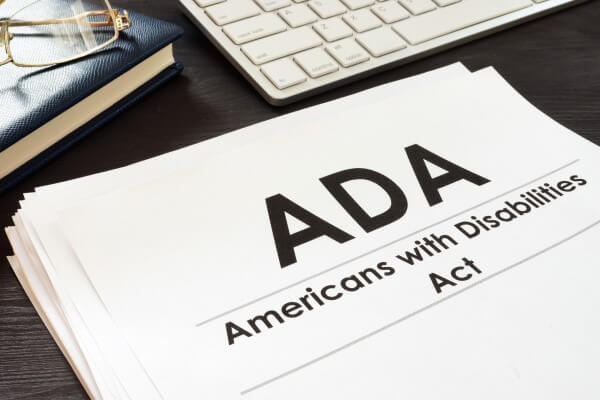
Information and Referral (Information and Assistance [I&A])
The AT Act does not include a formal definition of a statewide information and referral system but describes the requirement of the Program to provide for the “continuation and enhancement of a statewide information and referral system designed to meet the needs of targeted individuals and entities”. It further describes the content of the system as one that shall “…deliver information on assistive technology devices, assistive technology services (with specific data regarding provider availability within the Program), and the availability of resources, including funding through public and private sources, to obtain assistive technology devices and assistive technology services. The system shall also deliver information on the benefits of assistive technology devices and assistive technology services with respect to enhancing the capacity of individuals with disabilities of all ages to perform activities of daily living.”
Information and Assistance is one component of public awareness.
Characteristics
Public Awareness
Public awareness activities are designed to reach large numbers of people, and may include mass communications (public service announcements; TV and radio interviews; newspaper stories and columns), newsletters, brochures, websites, listservs, podcasts, and social media (Facebook, LinkedIn). Some states plan major public awareness activities such as an AT Awareness Day or month as proclaimed by the Governor; an exhibit in the State Capitol or in public libraries; or an AT Expo. AT Act Programs often will be exhibitors are statewide conferences that attract large numbers of attendees. Public awareness activities may be conducted in coordination and collaboration with other entities including state agencies and disability organizations, with financial support given to or received from other entities. Quality public awareness activities are designed to reach targeted individuals throughout the state/territory.
Information and Assistance
Information and Assistance (I&A) is conducted to provide consumers with accurate, timely, and complete responses to their requests for information about assistive technology devices and services and about the AT services offered by the AT Act Program. AT Act Programs should have a comprehensive and accessible web site that includes detailed information about the AT services offered by the program and related resources. Programs usually have a general email and phone number (including a toll-free line) that provide a way for the public to make inquiries. Ideally, the program also has a way to respond to inquiries in languages that are frequently spoken by individuals in the state/territory, e.g., has a TTY or videophone line; subscribes to a “Language Line” or similar service. Public awareness activities may be conducted in coordination and collaboration with other entities including state agencies and disability organizations, with financial support given to or received from other entities.
Using Data for Program Improvement
Information and Assistance (I&A) is conducted to provide consumers with accurate, timely, and complete responses to their requests for information about assistive technology devices and services (including providers), funding for AT, as well as the AT services offered by the AT Act Program. I&A may take just a few minutes (e.g., emailing a parent information about including AT in the IEP) or an hour or two of intensive assistance to individuals about AT products (e.g., helping a consumer set up pictures and frequently dialed phone numbers in a photo phone they had purchased). In particular, care should be taken to classify intensive assistance of this nature as I&A, not “training”. I&A may be provided in person, over the telephone, via email, or by other means. Because I&A usually entails a personal contact, programs should be able to identify the category of the caller (e.g., person with a disability; representative of education) and the general type of information provided (e.g., related to devices or to services). I&A is the only component of public awareness for which meaningful data is available for generating reports through CATADA.
I&A Participants
Are you reaching the “targeted” populations described in the AT Act? You can generate a report that compares this activity by year (e.g., FFY 2020, 2021, and 2022). You can also compare your state’s trends (e.g., increase or decrease in overall number of individuals requesting I&A) with the national trend data, or with a state that is demographically similar.
Ask: How can we explain the distribution of individuals receiving I&A, either for devices and services or funding? Is this distribution desirable? How does the distribution of recipients of I&A by role in our program compare with percentages by role nationally? For example, how can we explain the fact that in our program, 70% of those receiving I&A on AT funding are family members, while nationally it is only 25%? Are our overall I&A numbers low, compared with similar programs, and how is that explained (e.g., our subcontractors may be under-reporting or misclassifying I&A). Has there been an increase or decrease in the overall number and/or distribution of I&A recipients over the last three years and if so, how can we explain that? Does the distribution of individuals receiving I&A look similar to – or different from – the targeted populations benefiting from State-Level activities?
Decide: Do we need to increase our outreach to one or more groups (which ones?), to familiarize them with our services, including I&A? Can we accomplish this through improved coordination and collaboration with targeted public and private entities (e.g., through a formal written agreement and/or contractual arrangement)?
I&A Topics
Are you providing I&A on topics related to both AT devices and services as well as AT funding?
Ask: How do the number and distribution of individuals receiving I&A for devices and services compare with the distribution of individuals receiving information on funding? How does the distribution by topic compare with percentages by topic nationally? How can we explain any disparity, e.g., 95% of inquiries are related to devices? Are there implications for staff development (e.g., need for improved capacity related to AT funding)?
Decide: Do we need to increase or change our activities so we are seen as a resource for information on devices, services and funding? For example, conducting more training about funding for AT may increase the number of inquiries we receive on this topic.
Frequently Asked Questions
Must the AT Act Program conduct public awareness activities?
Yes. Public awareness, including information and assistance, are required components of the State Leadership activities. Typically, funds for public awareness are part of the 40% a state expends on State Leadership activities. However, if the state claims “flexibility”, 30% of its funds will be divided among public awareness, training and technical assistance and collaboration. Limited funds for outreach may impact the degree to which targeted individuals are able to learn about the AT Act Program’s resources.
How can I tell if we are doing a good job of public awareness?
Data reflecting utilization of state-level services by type of individual served and the purpose of the AT (as collected as part of performance measures) and engagement of metro/non-metro residents (as collected from training participants) will provide a sketch of the degree to which the AT Act Program is successful in its outreach and public awareness. Some states choose to also collect data on the county I&A callers are from, where that information is available.
Do our public awareness materials need to be in alternate formats and languages?
AT Act Programs should be prepared to provide materials in alternate formats and languages. When distributing materials such as an exhibit table at events open to the general public or events that do not require pre-registration, it is appropriate for the AT Act Program to “model” accessibility by having its print literature available in a variety of formats, including Braille and large print. Input from the program’s Advisory Council, analysis of who the program has or has not been able to reach and serve, as well as reports from various data sources such as the American Community Survey may inform and influence the program’s decisions impacting language translations.
Our website is the primary way we provide public information. Should all materials (including videos, down-loadable forms and documents) be accessible?
Yes! As a recipient of federal funds, and in the interest of modeling accessibility, your website should conform to Section 508 standards. Videos should be captioned, podcasts transcribed, and all documents including down-loadable forms should be accessible.
We conducted an hour-long session at our state’s Independent Living Conference explaining all the resources of the AT Act program, including those of the Alternate Financing Program and our other partners. Is this public awareness or training?
If the primary purpose of the session was to provide information about the AT Act Program, rather than to build participants’ knowledge, skills, and competencies regarding assistive devices and services, it would be considered public awareness, even though you would be able to individually identify (and receive satisfaction surveys from) the participants.
Do we need to have a staff person (or subcontractor) whose sole responsibility is Information and Assistance?
The program may designate primary responsibility (e.g., daily checking of the I&A email and toll free phone line) to one staff member or subcontractor, although the program should have a plan to tap the expertise of staff or other resources in order to respond to complex requests. There is no requirement for the manner in which a program implements its I&A activities as long as it satisfactorily provides for the “continuation and enhancement of a statewide information and referral system designed to meet the needs of targeted individuals and entities”.
Our reuse program includes two hours of individualized training for each recipient of a used computer. Is this reuse? Training? I&A?
Individualized instruction is one way to “…deliver information on assistive technology devices”, and is considered Information and Assistance. If there were several consumers receiving this instruction at the same time, it could be counted as training. However, care should be taken not to double count an activity. A decision should be made ahead of time as to how the activity will be classified, as different data, including satisfaction measures, may need to be collected for different activities. In addition, if the consumer is eligible for training on the devices and that service should be provided or paid for by another entity (e.g., VR or education), the program may violate the prohibition against supplanting.
We would like to purchase “give-aways” to promote our program at various expos, health fairs, and other events. Is this an allowed expense?
HHS policies indicate that promotional items such as mugs, bags, lanyards, etc. to be given to individuals are considered personal gifts for which appropriated funds may not be expended. You may use other sources of funding (e.g., fee-for-service income) in order to purchase such items.
Training
Training activities are instructional events, usually planned in advance for a specific purpose or audience that are designed to increase participants’ knowledge, skills, and competencies regarding assistive technology (AT). Such events can be delivered to large or small groups, in-person, or via telecommunications or other distance education mechanisms. In general, participants in training can be individually identified and could complete an evaluation of the training. Examples of training include classes, workshops, conference sessions, and presentations that have a goal of increasing skills, knowledge, and competency. Training and/or presentations intended only to increase general awareness of AT are considered public awareness events.
Definition
Although the AT Act does not include a formal definition of training, the Act describes training as “activities that enhance the knowledge, skills, and competencies of individuals…(from entities described above) which may include—
- raising awareness and providing instruction on the benefits of assistive technology and the Federal, State, and private funding sources available to assist targeted individuals and entities in acquiring assistive technology;
- skills development in assessing the need for assistive technology devices and assistive technology services;
- instruction to ensure the appropriate application and use of assistive technology devices, assistive technology services, and accessible information and communication technology for e-government functions;
- instruction in the importance of multiple approaches to assessment and implementation necessary to meet the individualized needs of individuals with disabilities; and
- technical instruction on integrating assistive technology into the development and implementation of service plans, including any education, health, discharge, Olmstead, employment, or other plan required under Federal or State law.
Distinguishing Training Activities from Public Awareness Activities
Training activities have more depth and breadth than public awareness activities and are focused on skill building and competency development. If the purpose of a training session is to create awareness, the training session should be counted under public awareness, not under training. In general, participants in training can be individually identified, while in awareness activities it may not be possible to identify each individually. Working with individual consumers on how to use a particular AT device or troubleshooting problems with devices should be reported under Public Awareness as Information and Assistance.
Distinguishing Training from Technical Assistance
Training is designed to teach, present, or guide individuals in order to impart knowledge, skills, and competencies. Technical assistance is focused on providing extensive assistance to state or local agencies or other entities (rather than individuals) and generally involves problem solving to achieve a mutually agreed-upon goal. Technical assistance may involve multiple contacts and interactions over an extended period of time. In some cases, training may be a component of technical assistance. Training that is provided as part of technical assistance can be reported here, but only if the training was one of other several technical assistance activities. If training was the only technical assistance activity, it can be reported as either training or technical assistance, but not both.
Performance Measures and Required Data Collection Elements
A performance measure is required for the training topic area of Information and Communication Technology Accessibility (ICT). No other training topic areas have a required performance measure.
Training topics are organized into five primary categories:
- AT Products/Services – training focused on AT: such as instruction to increase skills and competency in using AT, and integrating AT into different settings.
- AT Funding/Policy/ Practice – training focused on funding sources and related laws, policies, and procedures required to implement and deliver access to AT devices/services and related.
- Combination of 1 and 2 above – AT Products/Services and AT Funding/ Policy/Practice
- Information and Communication Technology (ICT) Accessibility – training focused on accessible information and communication technology (ICT) including web access, software accessibility, procurement of accessible ICT, etc.
- Transition – training focused on education transition (school to work or post-secondary education and early intervention (birth to 3) to school aged (3 -21) and community transition (maintaining or transitioning to community living). (Note: A number must be reported here unless transition technical assistance is reported.)
The APR required data elements include the number and general characteristics of individuals who participated in training, the topics of training, and the geographic distribution of individuals who participated in the training.
There is no explicit reporting requirement for Transition, but the Act includes a requirement that statewide AT programs provide training/technical assistance to assist students with disabilities who receive transition services under IDEA and adults with disabilities maintaining or transitioning to community living. The Act also requires that at least 5% of the money spent on State Leadership activities be used for the transition training and/or transition technical assistance activities. Training focused on education transition and community transition must be reported unless transition technical assistance activities are reported. Detailed information on the reporting of ICT and transition activities can be found in the instructions for the Annual Progress Report (APR) and the APR reporting instrument.
Using Data for Program Improvement
Once a year, AT Act Programs should review definitions and reporting requirements (found in the OMB instructions) with staff and subcontractors to ensure data collection and reporting fidelity. Information on distinguishing training from public awareness and technical assistance, as well as information regarding the classification of training topics (especially what “counts” as ICT training), should be reviewed. Although there is no specific reporting requirement for transition, if you choose to meet the transition requirement through training (rather than technical assistance), consider whether you are providing training to assist students with disabilities who receive transition services under IDEA (either transition from Part C to Part B or transition from school to post-secondary or employment) and adults with disabilities maintaining or transitioning to community living.
Training Participants
Are you reaching the “targeted” populations described in the AT Act? Review your data annually and compare it to previous years and the national trend data.
Ask
How can we explain the distribution of training participants by role (e.g., individuals with disabilities; representatives of employment)? For example:
Is this distribution desirable? Are we reaching representatives of technology, a target audience for Information and Communication Technology (ICT) training?
Do the training participants reflect those benefiting from the required transition training (or are we meeting that requirement through technical assistance)?
How does the distribution of training participants by role in our state compare with percentages by role nationally?
Has there been a shift in distribution of training participants over the last three years and if so, how can we explain that?
Overall, what is trending in terms of the number of training participants?
Decide
- Do we need to change or increase outreach to one or more targeted groups to increase their participation in training, and if so, which ones and why?
- Can we accomplish this through improved coordination and collaboration with targeted public and private entities?
- Do we need to develop a new strategy to reach training participants who should be the focus of ICT or transition training?
Trainings by Topic
Ask
- How does the distribution of training topics compare with national percentages?
- Does our program look very different from the national picture, and if so, why?
- Has there been a shift in the distribution of training topics over the last three years and if so, how can we explain the trend (e.g., the staff person who conducted training on funding and policy retired last year)?
Decide
- Do we need to focus our training on different topics?
- What does that mean in terms of staff (or subcontractor or partner entity) capacity?
- Do we need to develop a new strategy to meet the ICT and transition requirements?
Frequently Asked Questions
General
What is a “high impact” or “innovative” training, as required by the APR?
The Annual Progress Report (APR) requests a brief anecdote describing a high impact or innovative training conducted during the program year. This is an opportunity for the AT Act Program to highlight, in a short narrative, a training event of which it is particularly proud. An example of a high impact training may be one that results in the state’s adoption of a new policy of accessibility applying to all state websites. It may refer to a training that has a high impact as a result of the numbers of individuals trained. An innovative training could be one that uses unique delivery modes, reaches an audience that is different from the usual training participants, or is an AT-related topic that is unique or new.

We provide individualized training to consumers. How do we report the data?
Individualized training is considered public awareness and should be reported as such.
We had a booth at a conference and we provided a presentation session about our program and services, how do we report this data?
Both of these activities are Public Awareness events and should be reported as such. Only presentations that are designed to increase participants’ knowledge, skills, and competencies regarding AT should be reported as training.
We participated in a conference where we brought multiple AT items and set up a demonstration area. Attendees were able to try devices and some received training on devices. Can we report these as demonstrations and training?
General demonstrations of equipment and individualized trainings are a public awareness activity not a training.
Is there a minimum duration required for a session to be considered training?
There is no required length of time. However, a session must increase the skills and competencies of the participants to be considered training. Providing an overview of services and/or showing different AT devices does not meet the criteria to be considered training.
We are hosting a webinar in which we will review device/software features of a particular category of AT with participants. During the live webinar, participants will have the opportunity to ask questions in real time. Our learning objectives include attendees’ increased knowledge and skill in matching this kind of device/app to consumers. We plan to recruit broadly. Is this training?
Yes. Although the description of your event has some of the characteristics of a demonstration (exploration of features with a technology expert; ability for participants to ask questions in real time), it exactly meets the definition of training. This is an instructional event, planned in advance for a specific audience or purpose, designed to increase participants’ knowledge, skills, and competencies regarding AT. This would be a training counted under the category of “AT products/services”.
One of our signature training events is a statewide conference. We would like to use AT Act Program funds to underwrite speaker honoraria and facility rental. Are there restrictions on either of these uses?
In accordance with Uniform Guidance §200.432, speaker honoraria and facility rental are allowable costs. Conference sponsors are cautioned not to pay speakers who are doing this work under this or another federal grant. Conference hosts/sponsors must exercise discretion and judgment in ensuring that conference costs are appropriate, necessary and managed in a manner that minimizes costs to the Federal award.
At our conference we want to distribute t-shirts to identify staff and volunteers working the conference (e.g. sighted guides and interpreters), and purchase promotional items for door prizes. Can we do this?
No, these are not allowable expenses. T-shirts and promotional items would fall under the Uniform Guidance §200.421 restrictions regarding Advertising and Public Relations and federal grant funds cannot be used.
Our staff was an invited speaker on AT funding at a statewide AT conference in a neighboring state, sponsored by that state’s AT Act Program. She did her own session evaluation and collected information on the attendees and their satisfaction with the training. Can we count it, even though the event occurred in another state?
Yes, assuming the session meets the definition of “training”. Caution: If the hosting state did an overall conference evaluation that includes your session, there’s the risk of this data being “double counted”. It makes sense to discuss evaluation and reporting with the hosting program prior to the conference.
Our staff did a training session on the challenges of matching home automation as an ATIA webinar in September. ATIA provided the session feedback they collected. Can we count it, even though the event was virtual and reached people in other states? What if the evaluation data was not received until the following federal report period?
Yes, you can count this training session even though others outside of your state attended, as long as you obtained the requisite information about attendees (e.g., RUCC) and satisfaction data. It makes sense to coordinate with the sponsoring entity beforehand to make sure their evaluation form contains all the data elements you will need for reporting. It is advisable to count the event AND the associated data in the program year in which you received the data.
Our AT subcontractor does a multi-session training about AT for Occupational Therapy (OT) students. There are student fees associated with the course, which is competency-based and specific in its focus. Can we collect and “count” performance measures for this activity, even though it is not free to participants?
There is no prohibition against charging for activities performed and reported by the AT Act. However, programs are encouraged to develop policies and procedures delineating circumstances under which training is free and when there will be a charge. For example, a training that is customized for a specific audience in response to a specific request for that training may have a fee, although the basic AT (type) for (diagnosis/age/activity) may be offered at no cost.
ICT
Must a program provide Information and Communication Technology Accessibility training?
Yes.
What type of ICT training must be provided?
AT Act Programs are required to provide training on the importance, development, application, and integration of accessibility for information and communications technologies. This can include laws related to ICT, organization infrastructure to address accessibility, development of accessible documents, multimedia, and websites, procurement policies, accessible communications, and other technology and communication components related to ICT infrastructure.
Is training for computer access or phones considered ICT training?
No. ICT training can be distinguished from other trainings in that it addresses policies, development, integration, and/or infrastructure related to accessible ICT. Specific AT devices, hardware, and/or software is not ICT training and should be reported under the AT Products/Services category.
What are the performance measures for Information and Communication Technology Accessibility Training?
There are two possible outcomes related to ICT training: 1) Information and communication technology procurement or development policies, procedures, or practices will be improved or better implemented to ensure accessibility and/or 2) Training will be developed or implemented to ensure accessibility of websites, software or other ICT.
Does the ICT training count only if the participants are IT professionals?
Participants are usually representatives of technology and are individuals who interacted with the AT Act Program primarily for purposes related to accessible technology (using computers, software, websites, telecommunications, office equipment, and media). This category can include technology experts such as computer programmers, web and application developers, information technology professionals and procurement officials, e.g., the owner of a web consulting business; a university director of Information Technology. In some cases, participants may fall into other categories such as education (for example, the teacher who runs the “computer club” at the high school; graduate students in computer sciences). Whether your training “counts” as ICT training depends not so much on the topic or the identity of the participants, but whether the training is designed to result in meeting the performance measure requirements.
What if our program does not have staff that are skilled in this topic area?
The AT3 Center can assist programs with ICT training and technical assistance needs in order to build capacity. Contact AT3 to discuss your specific TA needs. Don’t forget to check out our online learning modules and resources.
Where can I find more information on specific laws related to ICT?
Access to information and communication technology (ICT) is addressed by the US Access Board standards and guidelines issued under Section 508 of the Rehabilitation Act and Section 255 of the Communications Act.
Transition
Must a program provide training on Transition?
AT Programs must implement at least two required types of transition activities. One activity must be related to school transition (e.g., secondary school to post-school) and one must be related to community living transition (e.g., congregate living to community living). The activity conducted may be either a training event or a technical assistance initiative and should only be reported once in the appropriate section of the APR.
What is the fiscal requirement for transition activities?
The AT Act requires that at least 5% of the money spent on State Leadership activities be used for the transition training and/or transition technical assistance activities.
How do programs calculate the 5% requirement?
The 5% is a required minimum and is calculated based on the expenditure of funds used for state leadership activities; not the full award. This expenditure should align with your state plan and APR.
Resources
General
So You Are Planning a Virtual AT Conference! (video)
Using Zoom to Conduction Remote Training (video)
Using Zoom to Support AT Act Program Activities (PDF)
For training and technical assistance related to the state leadership activity training requirement, Contact the AT3 Center
OMB Grant Rules (apply to all federal grants and include the Uniform Cost Principles)
HHS Rules for Grant Awards (these are the same as the general OMB rules, they just have different Section numbers specific to HHS)
ICT
The goal of the ICT Accessibility Community of Practice is to provide training and resources to support the efforts of AT Act Programs working to deliver ICT training and technical assistance in their states and to provide a forum for Programs to share best practices. Email Lyssa Prince to join.
The ICT Accessibility Resources webpage provides a repository of past training materials and numerous other resources on ICT accessibility related to general information, procurement, testing and assessment, multimedia, documents, social media, and computer and mobile device access.
The Georgia Tech Center for Inclusive Design and Innovation (CIDI) is a research and service center that provides ICT expertise on unmet needs in higher education, government, non-profits, and corporations throughout the United States. They offer a variety of services to support the provision of accessible ICT.
Oklahoma ABLE Tech offers ICT expertise and services and shares a list of some of their favorite resources to help as you create more accessible information technology products.
The Partnership on Employment & Accessible Technology (PEAT) is a multi-faceted initiative to foster collaboration and action around accessible technology in the workplace.
Teach Access is a collaborative effort of higher education, industry, and advocacy to create models for teaching and training students of technology to think and build inclusively and create accessible experiences with ICT.
The US Access Board develops standards and guidelines related to ICT federal legislation.
WebAim offers training and services related to website accessibility.
Transition
The National Technical Assistance Center on Transition assists State Education agencies, Local Education agencies, State VR agencies, and VR service providers in implementing evidence-based and promising practices ensuring students with disabilities, including those with significant disabilities, graduate prepared for success in postsecondary education and employment.
The National Council on Independent Living advances independent living and the rights of people with disabilities. Their services include training and resources on independent living skills for transition to the community.
The National Association of Area Agencies on USAging is a 501c(3) membership association representing America’s national network of 622 Area Agencies on Aging (AAAs) and providing a voice in the nation’s capital for the 256 Title VI Native American aging programs. Their resources include information on transition and livable communities for aging adults.
State Leadership Activities

The 21st Century Assistive Technology Act specifies the statewide activities required of programs receiving funds under Section 4 of the AT Act. State Leadership activities authorized by the AT Act include providing training, technical assistance, information and referral, and public awareness throughout the state or territory. A portion of training and technical assistance efforts are focused on transition (from school to work; from school to other aspects of adult life; or from congregate to community-based settings). Additionally, activities to improve accessibility of information and communication technology (ICT) are conducted.
To go directly to a State Leadership Activity page, choose an active link listed below.
Training
Training activities are instructional events, usually planned in advance for a specific purpose or audience that are designed to increase participants’ knowledge, skills, and competencies regarding assistive technology (AT). Topics may include AT and the IEP; AT for Aging in Place; Assuring Accessibility of Your Website (e.g. for webmasters); or AT for successful transition to Post-Secondary Education. Such events can be delivered to large or small groups, in-person, or via telecommunications or other distance education mechanisms.
Technical Assistance
Generally, the purpose of technical assistance is to improve the capacity of the beneficiary organization, as evidenced by increased efficiency, increased effectiveness, and/or increased funding (CCF, 2010). The request for assistance to establish or improve assistive technology policies and procedures may be made by entities “targeted” in the AT Act, including but not limited to “representatives of State and local educational agencies, other State and local agencies, early intervention programs, adult service programs, hospitals and other health care facilities, institutions of higher education, and businesses.” Technical assistance may involve multiple contacts and interactions over an extended period of time.
Public Awareness
The AT Act describes public awareness activities as activities “to provide information to targeted individuals and entities relating to the availability, benefits, appropriateness and costs of assistive technology devices and services.” This includes the development and distribution of informational materials regarding the AT Act Program activities. Public awareness activities are intended to reach large numbers of individuals, e.g. through exhibits and expos, blogs and websites, and the distribution of program information.
Information and Assistance (I&A)
- Public Awareness also includes information and referral including individual assistance to “…deliver information on assistive technology devices, assistive technology services (with specific data regarding provider availability within the State), and the availability of resources, including funding through public and private sources, to obtain assistive technology devices and assistive technology services.” I&A reflects the specific needs of people with disabilities, their families, and other stakeholders contacting the AT Act Program, and is conducted to provide consumers with accurate, timely, and complete responses to their requests for AT-related information.
Required Federal Reporting
Federal Reporting
State Plan and Instructions document can be found on the CATADA website under the Resources header on the Federal Reporting Forms page.
Annual Progress Report Instruction Manual and Data Instrument can be found on the CATADA website under the Resources header on the Federal Reporting Forms page.
Administrative Guidance for State Plans and APR’s
The following PDFs are available for download.
- Summary of AT Act Section 4 Grantee Requirements
- Annual AT Data and Fiscal Calendar
- AT Leasing Activities
- AT “Maker” Efforts
AT Act information including frequently asked questions, a link to the legislation, the history of the Act, a summary of the Act, and an overview of Section 6 of the Act can be found on the Learn about the AT Act page of this website.
State Plan
The State Plan serves as the application for Section 4 AT Act formula funding and identifies which AT Act activities the Section 4 State AT Program grantee will conduct (or if the grantee claims comparability or flexibility) and how they will be implemented as part of the State AT Program. It covers a three-year period initially with required interim updates annually. The plan is reviewed by ACL to ensure it conforms to the State Plan instructions and the requirements of the AT Act. The content of the State Plan is directly linked to the requirements for reporting annual data to ACL as described in the next section. Together these two data reports satisfy the federal data reporting requirements of Section 4 of the AT Act for the 56 Section 4 formula funded grantees. One component of the State Plan requires each grantee to report actual expenditure data tracked by specific categories as outlined in the AT Act. Additional information about expenditure tracking and reporting can be found under Fiscal Management.
The current State Plans for each state and territory for the 2021-23 period are available at: CATADA | State AT Program Information.
Annual Progress Report
Each State AT Program is required to submit the Annual Progress Report (APR) by December 31 of each year. The APR covers the period of October 1st through September 30th of each fiscal year and includes all the data elements required by Section 4(f) of the AT Act for state financing, device loan, reuse, device demonstration, training, technical assistance, public awareness, information and referral, state improvement outcomes, and leveraged funding. APR data must be reported for each activity included as part of your State Plan for AT.
The State Plan for Assistive Technology data collection document along with the Annual Progress Report (APR) data collection instrument and instruction manual are reference documents that should be easily accessed and frequently utilized by all State AT Program Directors. A link to the most recent CATADA webinar on APR data entry is provided below under the resources section of this page.
Data Reporting Systems
The Center for Assistive Technology Act Data Assistance (CATADA) provides technical assistance and supports to State AT Programs funded under Section 4 of the 21st Century Assistive Technology Act. CATADA has developed and supports the web-based data reporting system for the Annual Progress Report (APR) called the National Assistive Technology Act Data System, (NATADS). This is an aggregate data reporting system used by State AT Programs (Section 4 formula funded grantees) to submit the required data elements of the APR pursuant to the AT Act mandates. NATADS primary purpose is to serve as the official APR data collection mechanism for the Section 4 formula funded grantees. It is not designed to provide a comprehensive data management system for internal operation of State AT Programs nor are their resources to support development of such a system.
The State Plan for AT for the 2021-2023 reporting period along with annual updates will be submitted in a system that is under development by ACL.
The CATADA website provides a wealth of data on all State AT Programs gathered from the APR. In addition, publications that summarize State AT Program data by fiscal year can be accessed and downloaded from the CATADA website.
CATADA has developed a web-based day-to-day data collection system that can be used by Section 4 State AT Programs for reporting data for all activities included in the State Plan for AT and required by the Annual Progress Report (APR). This system covers all the required data elements for all Section 4 authorized State AT Program activities, State Financing, Reuse, Device Loan, Device Demonstration, Training, etc. The system allows for data entry by multiple people and sites in an online format with the AT Act Program controlling access. For more information about this system please contact Vance Dhooge at vdhooge@ataporg.org.
Performance Measures
ACL has established three types of measurable goals: (1) Access to AT Goals, (2) Acquisition of AT Goals, and (3) Information and Communication Technology (ICT) Accessibility Goals.
- Access Goals relate to the state level activities of device loan for a decision-making purpose and device demonstration. The State will show that it has improved access to AT by reaching the ACL set target percentage of individuals and entities who accessed device demonstration programs or device loan programs and made a decision about an AT device or service as a result of the assistance they received. The Access Goal performance measure data is found in the Annual Progress Report (APR) for State Assistive Technology Programs.
- Acquisition Goals relate to the state level activities of state financing, device reutilization, and device loan for purposes other than decision-making. The State will show that it has improved acquisition by reaching the ACL set target percentage of individuals and entities who obtained devices or services from State financing activities or reutilization programs who would not have obtained that AT device or service. The Acquisition Goal performance measure data is found in the Annual Progress Report (APR) for State Assistive Technology Programs.
- ICT Accessibility Goal is focused on obtaining an outcome/result from information and communication technology accessibility training including improvement of policies procedures or practices in the areas of website and software development and procurement. The State will show that is has improved ICT training results by reaching the ACL set target percentage of participants reporting a targeted outcome. The ICT Training performance measure data is found in the Annual Progress Report (APR) for State Assistive Technology Programs.
Using Data for Program Improvement
With 2022 Annual Performance Report (APR) data available on the CATADA website, AT Act Programs can begin to analyze their performance with an eye towards identifying possible areas for program improvement and/or changes to the State Plan for Assistive Technology (SPAT). Captioned video tutorials to facilitate using the CATADA tools are available on their website. You can run the following activity reports:
- Your state, single activity, single year
- Your state, single activity, multiple years (trend data 2020, 2021, 2022)
- Your state, single activity, compared with national data (and/or compared with a demographically similar state)
The AT3 Center has provided specific information on using your data for program improvement. It is included on each State Level activity web page (Device Demonstration, Device Lending, State Financing, and Device Reuse) as well as the State Leadership pages for Training and Public Awareness.
Who to Contact for Help
- Contact the AT3 Center for help with programmatic requirements, program implementation, program management or any other aspect of training and technical assistance.
- Contact your ACL Grants Management Specialist for questions related to your notice of award, grant amendments, continuation awards, or other questions related to the terms and conditions of your award.
- Contact CATADA for technical assistance with required annual federal data reporting (State Plan and Annual Progress Report).
Communities of Practice

The AT3 Center has convened “Communities of Practice” (CoP) to promote sharing and problem solving for AT Act Section 4 grantees and their partners in implementing state level activities as well as technical assistance and training (state leadership) related to information and communication technology (ICT) access. The members of the CoPs should be staff or program partners who are engaged in directing or implementing the activities. The CoPs will communicate via periodic, topical and focused webinars and/or conference calls, through online discussions, as well as involvement in other training events. To join a CoP, contact Jamie Anderson at Jamie.anderson@ataporg.org.
Information and access instructions for all CoP meetings and webinars are located under each CoP below.
This Community of Practice focuses on the ins and outs of state financing activities, including but not limited to alternate financing (e.g. cash loan programs); device distribution programs; cooperative buying; and other strategies that help people acquire AT.
This Community of Practice focuses on practices and problem solving in device repair, redistribution and recycling (both reassignment and open ended loan) and device exchange by developing resources and addressing reuse policy issues.
Because of the shared focus on device inventory selection, acquisition and maintenance, these two state level access activities are addressed by a single CoP. Topics addressed include identifying current “hot” AT products, strategies for inventory management, challenges with device maintenance and security, and other issues germane to providing device loan and demonstration.
Training in this area is required for State AT Programs along with reporting of specific performance measure outcome data. This CoP supports State AT Program staff, contractors and other external partners responsible for implementing ICT accessibility initiatives at the state level supplementing an expertise gap present in many states in this area. For additional ICT resources please visit our ICT Community of Practice Resources page.
This group is designed for Assistive Technology programs who have or who are interested in creating a program or project for 3D printing of AT devices.
AT3 Center Partnerships
AT3 Center partnerships increase access to and acquisition of AT devices and services.
The Georgia Institute of Technology’s (GT) Center for Inclusive Design and Innovation (CIDI) is actively developing an innovative suite of ACCESS Interface Tools to quickly, reliably and effectively connect the AT Act Community and assist individuals with disabilities with appropriate Assistive Technology, strategies & accommodations needed for working, living, learning and playing.
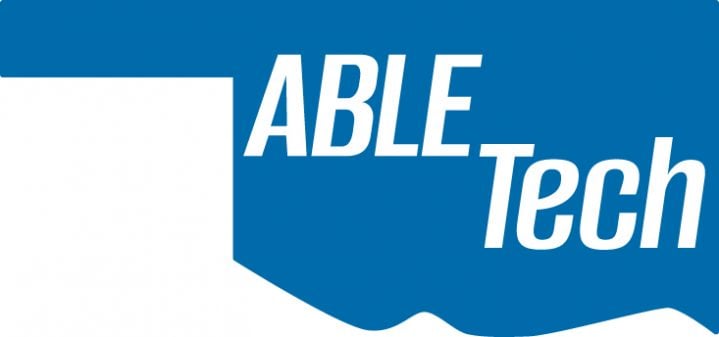
Oklahoma ABLE Tech, coordinates and provides Information and Communication Technology (ICT) accessibility training to support AT Act Program ICT accessibility efforts. ABLE Tech is also creating self-paced courses on a variety of digital accessibility topics for AT Act Programs, other ACL entities and beyond.
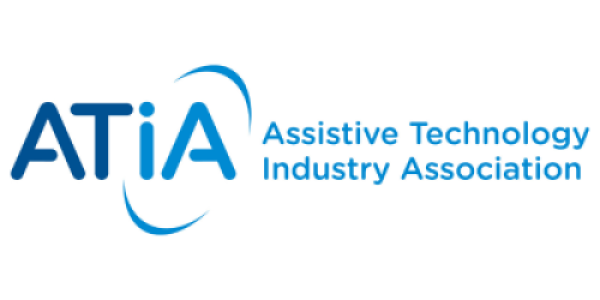
Assistive Technology Industry Association (ATIA) provides access for AT Act Programs and their affiliates/contractors to extensive webinar offerings including priority topics identified by the AT3 Center. AT3 and ATIA collaborate on trainings focused on program issues of interest to AT Act Programs, and ATIA provides networking opportunities for AT Act Programs during the annual ATIA Conference.
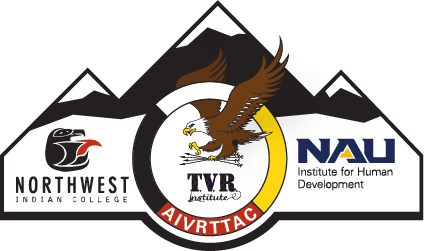
The American Indian Vocational Rehabilitation Training and Technical Assistance Center (AIVRTTAC) collaborates with the AT3 Center with the goal of increasing the use of Assistive Technology Act services and activities among Tribal nations.
AT3 Center Communications
AT3 Blog
Subscribe to our AT News and Tips blog for more in-depth information about assistive technology devices, services, and innovations from the AT Act Programs. Follow and explore the AT3 Blog for interesting AT information.
Community of Practice Listservs
- Device Demonstration and Short-Term Device Loan
- State Financing
- Device Reutilization
- Information and Communication Technology Accessibility (ICT)
For more information on the Community of Practice Listservs, please visit the Communities of Practice page.
If you would like to join any of the AT3 Center listservs, please contact: Jamie Anderson Jamie.anderson@ataporg.org

AT Act Program Listservs
Grantees-Directors Listserv – This listserv is for AT Act Program directors only.
AT3 Center Listserv – This listserv is for AT Act Program directors and staff only.
AT3 Facebook Page
For information about AT in general, as well as the activities of AT Act Programs, please join AT3 Center on Facebook
AT3 X Page
For information about AT in general, as well as the activities of AT Act Programs, please follow us on X.





